Among all the genres and sub-genres anime involve, drama shows are those that will let you have a journey on the feels, or make you cry like a baby, or even make you feel afraid. The main feature each drama anime share is that, for one reason or the other, each drama show is memorable.
In anime, drama is a great genre because it contains some of the best character development. Drama anime characters face a variety of challenges such as love problems, class problems, mental and physical health issues, and grief.
Not content to simply place its characters in these circumstances, drama shows how they respond and how they change as a result. Things aren’t all doom and gloom all the time; however – the best drama anime does have its moments of humor.
With so much wonderful drama anime out there, it’s hard to say which is truly the greatest. No matter what you’re looking for, if you love drama, there’s something on this list for you.
The anime shows on this list will let you express your pent-up emotions and make you feel something remarkably theatrical!
1. Steins; Gate
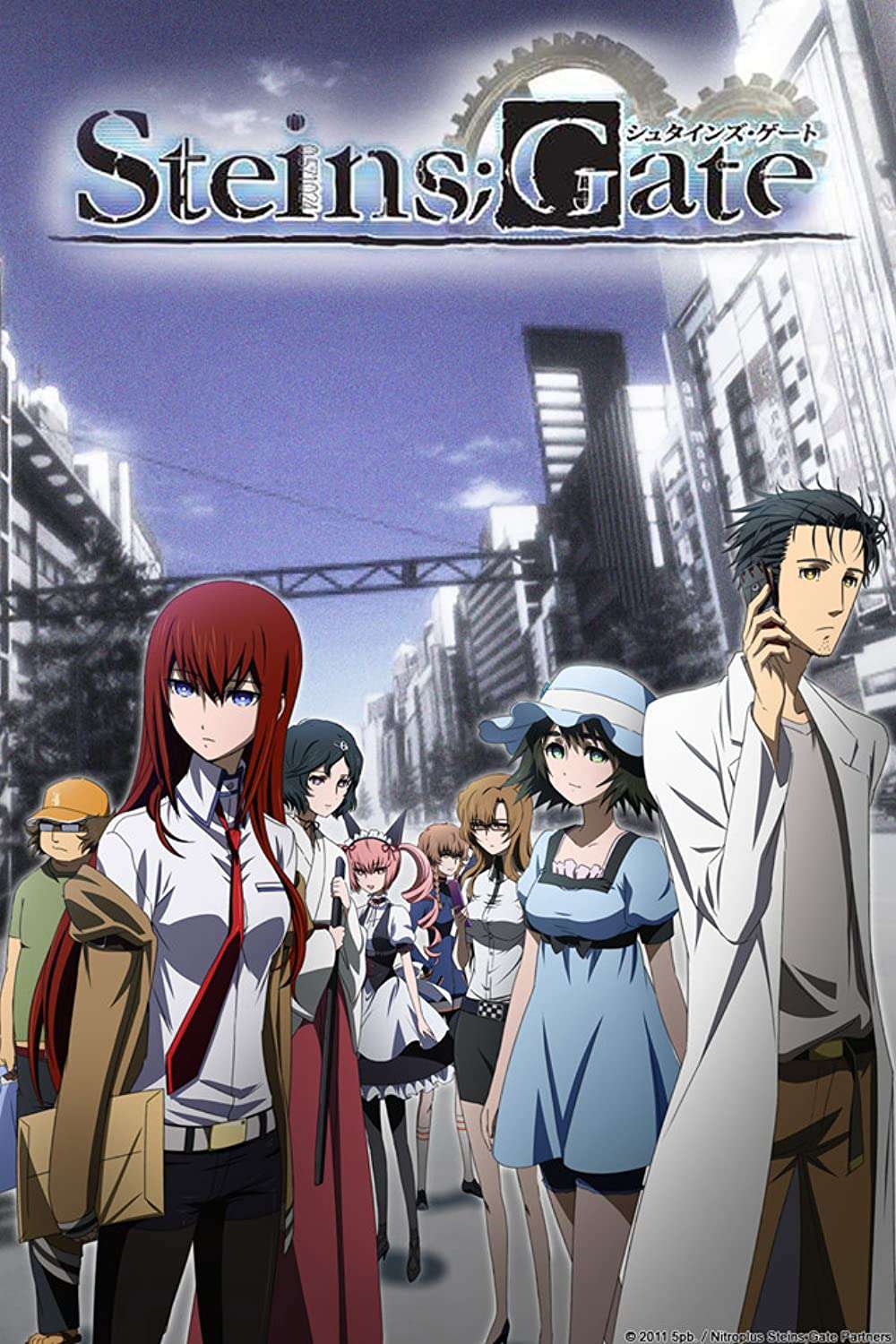
In Akihabara, self-proclaimed mad scientist Rintarou Okabe rents a room in an old building where he indulges in his hobby of inventing potential “future gadgets” with his friends Mayuri Shiina and Hashida Itaru, a perverted hacker nicknamed “Daru.”
As they pass the time, the trio works on their most promising invention; the machine dubbed the “Phone Microwave,” which transforms bananas into piles of green gel.
Even though miraculous in itself, the phenomenon doesn’t provide any concrete results in Okabe’s search for a scientific breakthrough; that is until the lab members are spurred into action by a series of strange happenings before stumbling upon an unexpected success – the Phone Microwave can send emails to the past, changing the flow of history.
Steins;Gate leads Okabe through the depths of scientific theory and practicality. While attempting to hold the key to the realm of time, Okabe is forced to cross the diverging strands of past and present.
You are sure to like the characters because they are well written. All of them have likable and recognizable characteristics, which are well described from the beginning.
Almost no character development is present, but this isn’t necessarily a bad thing; it would only distract from the fantastic plot that awaits. Only one character, logically, develops Okabe: as events unfold, you’ll see him change in character over the course of the episodes.
This development is, again, done exceptionally well: it is all for the better. All the characters in the story have a very realistic feel about them, which makes the story as a whole even more compelling.
Steins; Gate is not just another generic time travel show; the plot is executed extremely well. It is pretty much unmatched in terms of storytelling and plot development.
2. Ginga Eiyuu Densetsu
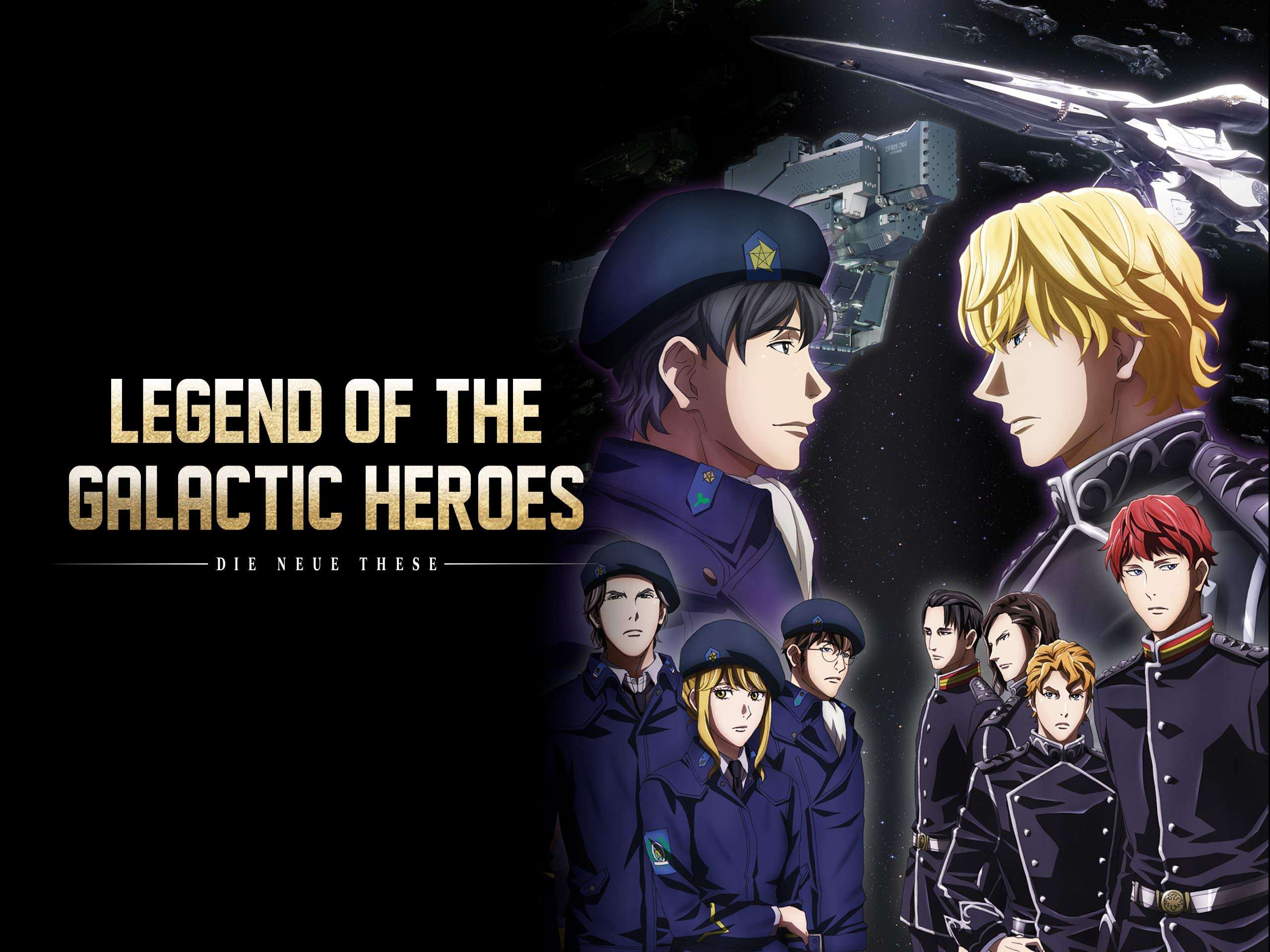
In the case of the Galactic Empire and the Free Planets Alliance, the 150-year-old stalemate finally ends when two new generations of leaders come to power: Reinhard von Lohengramm, an idealistic military genius, and Yang Wenli, the FPA’s reserved historian.
As Reinhard climbs the ranks of the Empire with the aid of his childhood friend, Siegfried Kircheis, he must also fight the remnants of the crumbling Goldenbaum Dynasty to free his sister from the Kaiser and unify humanity under one true ruler. Meanwhile, on the other end of the galaxy, Yang-an ardent supporter of democracy-must stand firm in his beliefs, despite the attempts of the FPA, and demonstrate to Julian Mintz that autocracy is not the answer.
Throughout the war’s many casualties, the two strategic masterminds must ask themselves why they are fighting.
Initially, the premise may seem simple, which appears to be a struggle between good, democracy, and evil, autocracy; however, this is not the case. Throughout the anime, both ideologies are extensively explored, as well as intricate political disputes that are accurately and realistically portrayed to the viewer.
Considering the vast number of episodes, viewers may think that the pace is too slow, but this is not true; the pacing is perfect for the narrative. Dialogs are detailed, rational, and straight-to-the-point, which are necessary for character exploration, as well as leaving viewers absorbed.
There are a large number of characters in the anime: each of them has a specific role, and each is equally important to each faction of the story. Another strength of the series is that these are not your typical heroes. They are aware of their actions and the consequences.
3. Koe no Katachi

While Shouya Ishida was in elementary school, he used the cruelest methods to beat boredom. Shouko Nishimiya, who is deaf, transfers into Shouya’s class, and the rest of his classmates bully her without thinking.
When her mother informs the school, he is singled out and blamed for everything that happened to her. Shouko leaving the school leaves Shouya at the mercy of his classmates. The teacher turns a blind eye to his heartless ostracism all through elementary and middle school.
Shouya, in his third year of high school, is still plagued by the wrongdoings he committed when he was a boy. As he regrets his past actions, he embarks on a journey of redemption: to meet Shouko once more and make amends.
In Koe no Katachi, Shouya returns to Shouko and tries to redeem himself, despite the shadows of his past following him everywhere.
Character development is exceptional, despite the plot being relatively simple. It is a mature story, but not in the sense that it is dark and gritty, but rather that it features fully developed characters who are realistically depicted.
While maintaining internal consistency among its characters, this anime avoids anime archetypes while making their actions relatable, or at least understandable. In this movie, characters are portrayed in a realistic and tangible manner that makes them feel real – like real people.
The character development of Shouya is impressive. The film explored some deep societal issues without romanticizing them, and his character was easy to empathize with. Additionally, Shouko’s struggles with a disability are also accurately depicted.
4. Kimi no Na wa

In stark contrast to her rural upbringing, Mitsuha Miyamizu, a high school girl, dreams of living the life of a boy in the bustling city of Tokyo. At the same time, Taki Tachibana is juggling his studies, part-time job, and hopes for a career in architecture in the city.
Mitsuha wakes up in Taki’s body one day and finds herself living the dream life in Tokyo. On the other hand, Taki finds himself living Mitsuha’s life for a time in the modest countryside. Searching for an answer to this strange phenomenon, they find themselves seeking each other out.
A major theme of Kimi no Na wa is Mitsuha and Taki’s actions, which begin to have a dramatic impact on each other’s lives, weaving them into a fabric held together by fate and circumstance.
As you might expect from a Makoto Shinkai production, the film is filled with heartfelt smiles and tears. Train metaphors, the idea of hopeless and distant love, and beautiful scenery all contribute to drawing you emotionally into the story, despite its simplicity and generic nature.
The artwork is beautiful, as one might expect from a Makoto Shinkai film. Production quality is outstanding. The artwork alone is enough to make you cry. While his color choices and use of movement and focus within the frame help you focus on what you need to focus on, he isn’t skimpy and doesn’t leave out details if your eyes wander.
It is easy to relate to the high school phase of our lives since stories we read or watch in books or films about characters who are going through this remind us of our own springtime. Shinkai did a good job depicting them and their relationships.
5. Monster
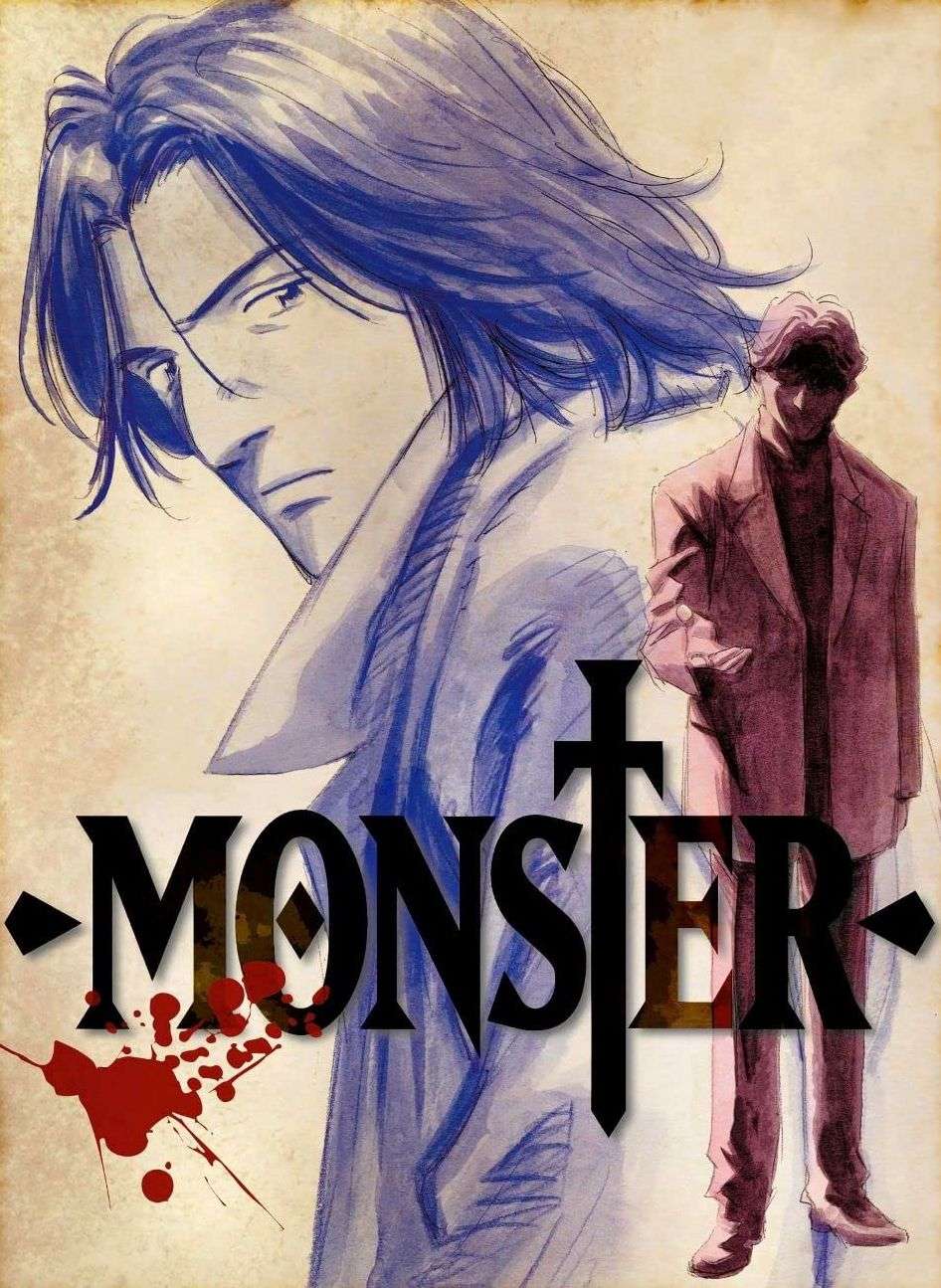
Kenzou Tenma, a prominent neurosurgeon, recently engaged to his hospital director’s daughter, is well on his way to ascending the hospital hierarchy. One night, a seemingly insignificant event changes Dr. Tenma’s life forever. He is preparing to operate on someone when the hospital director calls and tells him to switch patients and perform life-saving brain surgery on a famous performer.
While his colleagues, fiancée, and hospital director applaud his achievement, the switch results in the death of a poor immigrant worker, which causes Dr. Tenma to have a crisis of conscience.
So when the same situation arises, Dr. Tenma decides to perform surgery on the young boy Johan Liebert rather than the town’s mayor. Sadly, Dr. Tenma’s decision has serious ramifications, including the loss of his social standing. Following the mysterious deaths of the director and two other doctors, Dr. Tenma’s position has been restored. Having no evidence to convict him, he is released and subsequently becomes hospital director.
In nine years, Dr. Tenma must face the beast he operated on once again when he saves the life of a criminal. Now he must make amends for the havoc spread by the person he saved.
Monster has exceptional writing. This film moves slowly yet smartly captivates the viewer with moments of shock, awe, and depravity, which are masterfully combined with well-executed anticipation and a satisfying denouement. Having established the setting and many of the characters, the show begins its thrilling rollercoaster of action, suspense, and character development.
6. Sen to Chihiro no Kamikakushi

As a stubborn, spoiled, naive child, Chihiro Ogino, 10, is less than pleased to find an abandoned amusement park on the way to her new house with her parents. Venturing cautiously inside, she realizes that there is more to this place than meets the eye, as something strange begins to happen as dusk falls.
Chihiro has unknowingly crossed over into the spirit world when she encounters ghostly apparitions and food that transforms her parents into pigs. Assisted by the enigmatic Haku and by a cast of unique characters she meets along the way, she must summon the courage to live and work amongst spirits.
Chihiro’s journey through an unfamiliar world to save her parents and return home is vividly told in Sen to Chihiro no Kamikakushi.
Children are the very definition of mysterious wonder and awe-inspiring imagination. There have been moments in life when we’ve gone off into our own little world of childlike imagination and tried to experience an entirely new reality. Several films have attempted to recreate the nostalgic feeling of reliving childhood in a way that either succeeded or failed. Miyazaki is the kind of man who can do that flawlessly.
This isn’t a grand film with lots of bells and whistles. An ordinary girl in a strange world is portrayed in a quiet, subdued way in this story. Take a moment and appreciate the world and story Miyazaki has crafted for us to enjoy rather than expecting something huge.
Among the best things about this film is the lack of clearly good or evil characters. Everyone has both good and bad sides, though some may allow their evil sides to overshadow their good sides.
7. Hajime no Ippo

The entire life of Makunouchi Ippo has been filled with bullying. Ippo is constantly running errands and getting beaten up by his classmates. Although he would like to change, he lacks the passion to do so. In the middle of yet another bullying incident, Takamura Mamoru, who happens to be a boxer, saves Ippo.
A faint Ippo is taken to Kamogawa boxing gym for treatment after he is injured. The moment he regains consciousness, he is awed and amazed by his new surroundings in the gym but lacks the confidence to participate. Ippo must punch a punching bag that bears a photo of Takamura’s classmate. Eventually, Ippo feels something stirring inside him and asks Takamura to train him in boxing.
Takamura believes that Ippo does not have what it takes and assigns him an impossible task with a one-week time limit. As a result of his sudden desire to get stronger for himself and his hard-working mother, Ippo trains relentlessly to get it done within the time limit. The journey to the top of the boxing world begins for Ippo.
There is no doubt that what makes this anime so special are the characters. All of the characters are so likable, original, and well-developed.
Many of Ippo’s adversaries, even those who only last one episode, are given such plausible and compelling backstories that you might find yourself siding against him for a match or two. You end up believing that this world actually exists because these characters are so serious with their lives that you really feel it.
A highly entertaining anime series, Hajime no Ippo is able to capture the essence of boxing through some memorable bouts.
8. Code Geass: Hangyaku no Lelouch

Beginning with the conquest of Japan in the year 2010, the Holy Empire of Britannia is establishing itself as a dominant military power. Following its swift defeat, Japan has experienced significant resistance against these tyrants in an attempt to regain independence under the name Area 11.
Britannian student Lelouch Lamperouge finds himself caught between the rebel forces of Area 11 and the Britannian forces. Lelouch escapes, however, thanks to the timely arrival of a mysterious young woman named C.C., who gives him Geass, the “Power of Kings.” Discovering the vast potential of his newfound “power of absolute obedience,” Lelouch embarks on a perilous journey as the masked vigilante Zero in a crusade against Britannia to seek revenge.
The story of Code Geass is not particularly interesting or unique. The storyline is pretty straightforward and even a little cliche, but that’s exactly why the show is so engaging–even a simple storyline is handled in a unique, refreshing way that grabs the viewer’s attention. There are always enough twists and turns in a story like this to keep you from getting bored.
This series features quite a variety of characters. Some are very plain and one-dimensional, while others have an amazing level of complexity which makes them seem very lifelike.
Lelouch has a lot of emotions, opinions, a unique point of view, and a number of serious flaws that make him easy to relate to.
He is one of the more complex characters in the series, and despite his supernatural powers and genius intellect, he feels real. His ability to make the audience relate to him is probably the series’ biggest strength, and it’s the main reason why the story remains relevant and interesting.
9. Great Teacher Onizuka
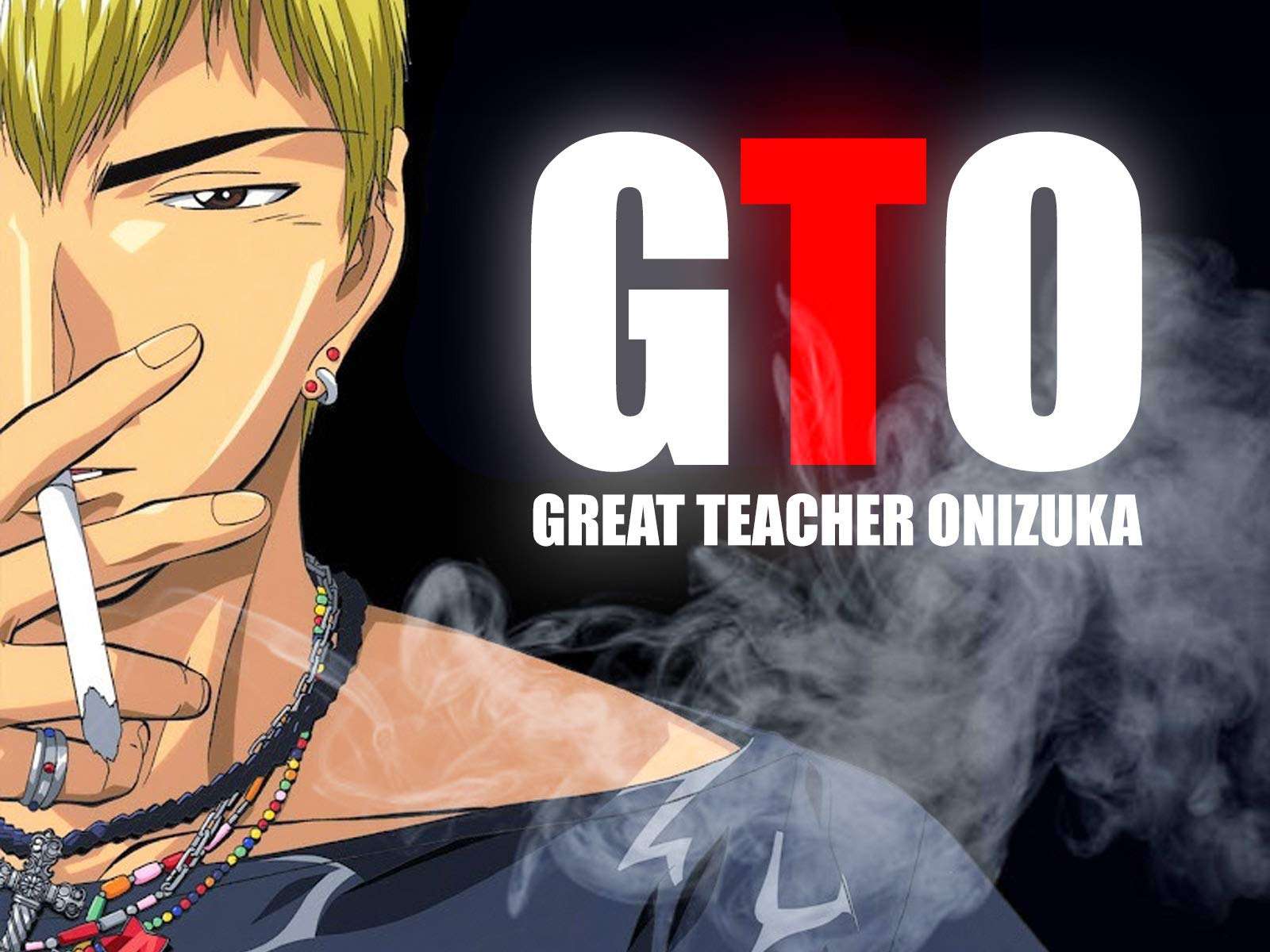
The twenty-two-year-old former biker gang leader, conqueror of Shonan, and virgin Eikichi Onizuka has a dream: to become the greatest high school teacher in all of Japan. There is no passion for teaching here, but he wants a teenage wife who will love him when he is old and gray.
Despite being a perverted, greedy, and lazy delinquent, Onizuka has more to him than meets the eye. When he lands a job teaching Class 3-4 at Holy Forest Academy, despite suplexing the Vice Principal, he must put all of his abilities to the test, as this class is particularly notorious.
Students in the class utterly despise all teachers and use psychological warfare to mentally wreck any new homeroom teacher they get, forcing them to quit and leave school. Onizuka, however, isn’t your average teacher, and he’s up for any challenge thrown at him.
His students face issues such as bullying, suicide, and sexual harassment on a daily basis. Regardless of the risk, Onizuka supports them with his unpredictable and unconventional methods-even if it means jumping off a building to save a suicidal child. As a result of his eccentric charm and fun-loving nature, Class 3-4 gradually learns how enjoyable school can be when they’re students of the Great Teacher Onizuka.
This is a somewhat cliched story, but there are some clever twists and plot devices that keep you on your toes. Watch the anime for its sheer fun value, even if it conveys a certain moral message. It’ll make you laugh, for sure, and it might even make you cry.
In the end, GTO isn’t a wildly original series, but like some of the best modern anime, it takes tried and true concepts and injects a heavy dose of fresh, funny attitude to create a thoroughly entertaining show.
10. Made in Abyss

In the depths of the earth lies the Abyss, a chasm filled with ancient relics and mysterious creatures. But how did it come to be? And what is down there? It has taken many brave individuals, known as Divers, to decipher the mysteries of the Abyss, descending into its darkest depths. The White Whistles, the bravest and best of the Divers, are revered as legends by those who remain on the surface.
Daughter of Lyza the Annihilator, a missing White Whistle, Riko dreams of becoming like her mother and exploring the deepest reaches of the Abyss. As a novice Red Whistle, however, she is only permitted to roam its uppermost layer. Still, Riko has a chance encounter with a mysterious robot that looks like a young boy. His name becomes Reg, and he has no memory of the events leading up to his discovery.
As the two are certain that the technology to create Reg must originate from the Abyss, they decide to explore the chasm for his memories and to see the bottom of the great pit for themselves. However, they are unaware of the harsh reality that is the Abyss’ true existence.
This anime has an excellent storyline. It is full of emotion, mystery, sadness, love, action, tears, and much more. Storytelling is straightforward and conceptually very simple; as the story progresses, more details are added.
It focuses on friendship, trust, why the Abyss is important to the locals, and the curse that surrounds it without being overly complex for the viewer to understand. Similarly, we can observe the need to find the truth and to solve the mysteries of the Abyss.
11. Shigatsu wa Kimi no Uso
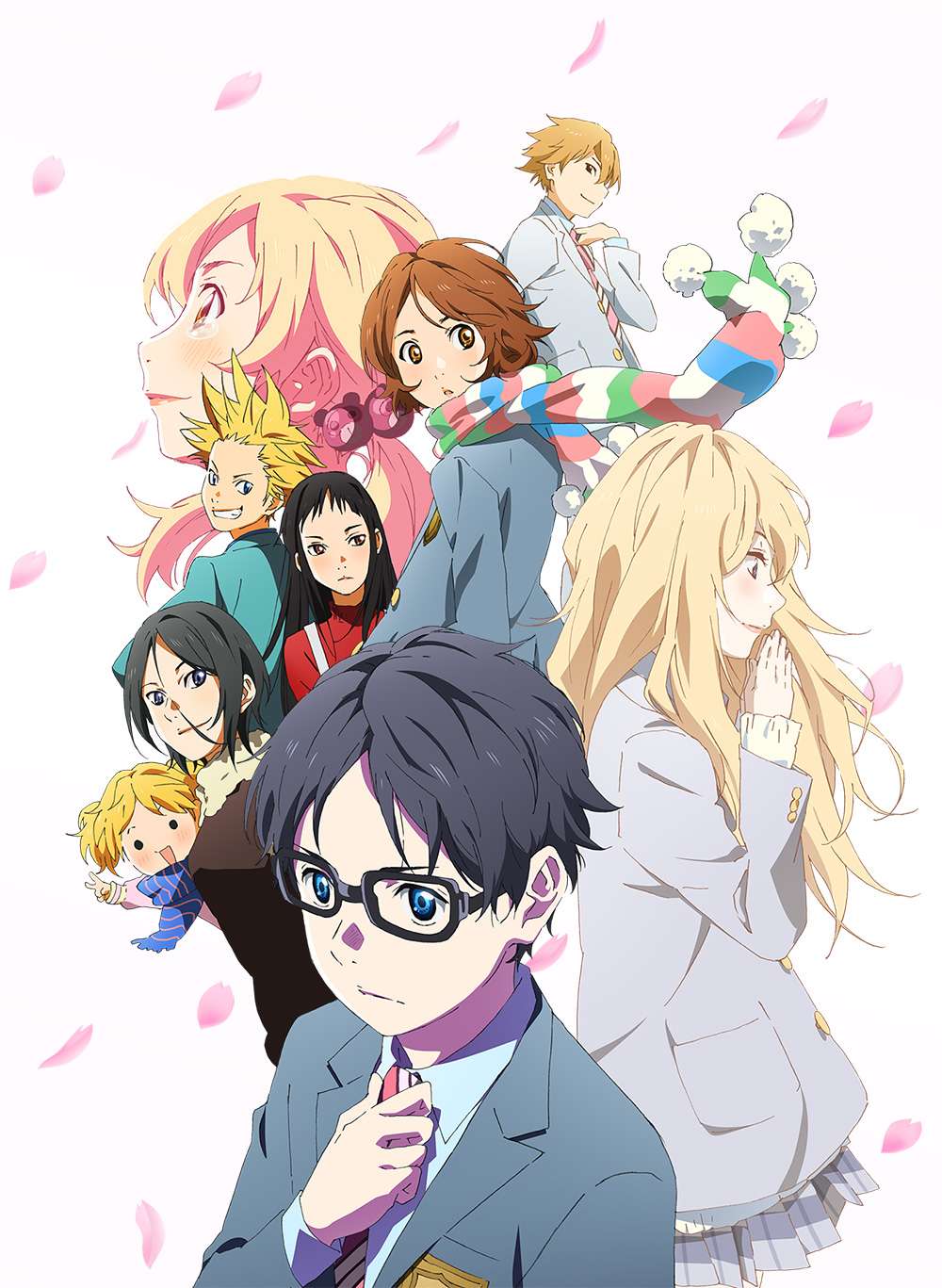
Kousei Arima, the human metronome, is accompanied by music on his journey. After losing his mother, Saki Arima, Kousei falls into a downward spiral, rendering him unable to hear the sound of his own piano.
Kousei still avoids the piano two years later, leaving behind his admirers and rivals, and lives a colorless life alongside his friends Tsubaki Sawabe and Ryouta Watari. Everything, however, changes when he meets a beautiful violinist, Kaori Miyazono, who sets him on a journey to face the music once again.
As Kousei comes to realize that music is more than playing each note perfectly, Shigatsu wa Kimi no Uso tells the story of his recovery as a single song can bring in a fresh spring breeze.
Despite appearing to be a colorful and lighthearted series, its pastel palette gives it the impression of being. As soon as we step back from its false prefaces, we realize that what we’ve become immersed in is a tragedy in the making—just another romantic comedy.
In spite of all its tragic elements, the series is not about tragedy. The series deals with healing, moving forward, and accepting the parts of ourselves that we prefer to ignore. Taking that first step sometimes requires assistance as well. Saying goodbye is also an important part of the process when it’s time.
The storyline is compelling because it delves into post-traumatic stress disorder, childhood abuse, chronic illness, as well as first love. All of these are described as horrific; they twist people, they ruin the best moments, and they have a long-lasting effect.
12. Howl no Ugoku Shiro
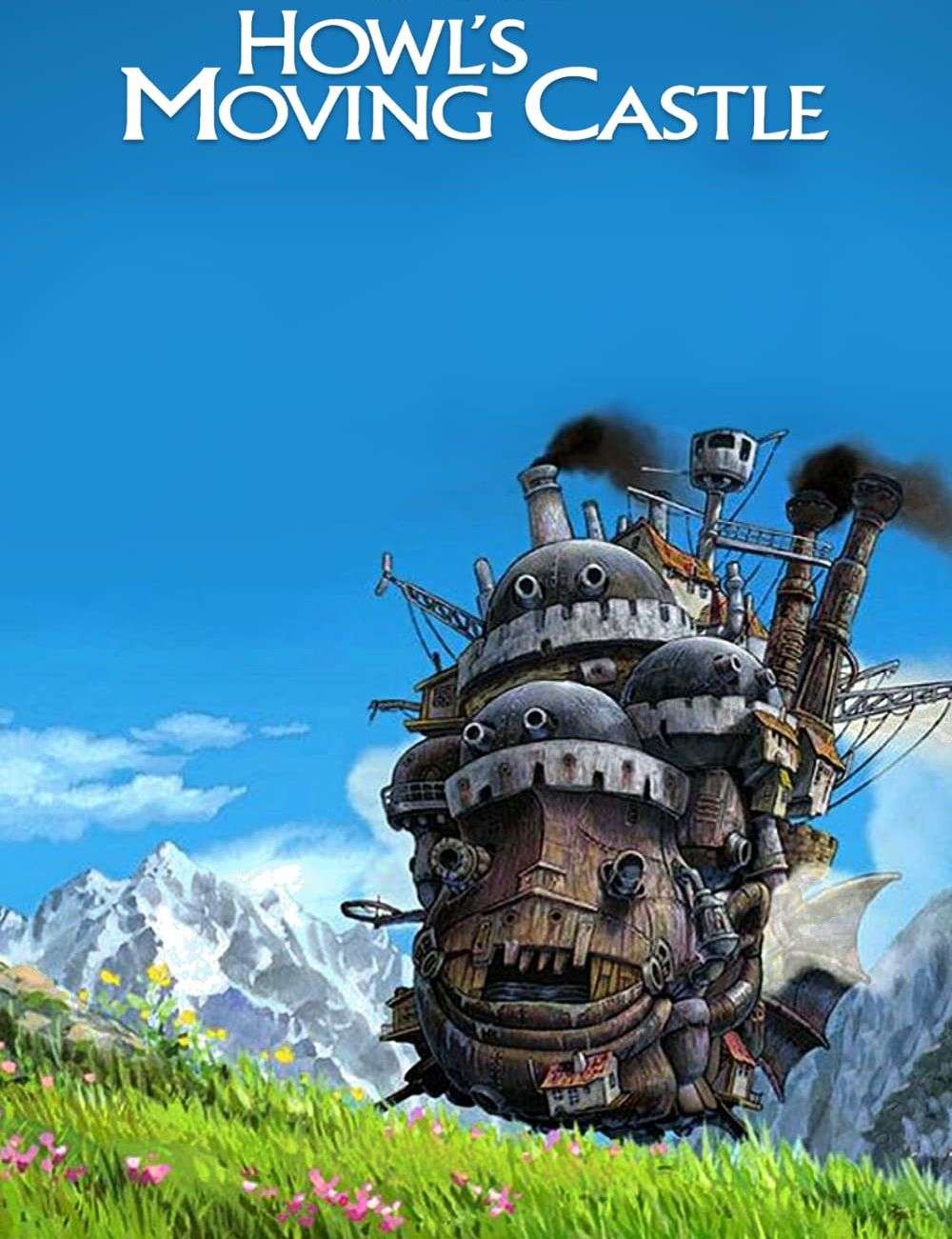
The jumbled piece of architecture, the cacophony of steam and creaking joints, with smoke billowing from each joint as it moves. The castle is home to the famous wizard Howl, rumored to be both a womanizer and a wizard, according to the gossip in Sophie Hatter’s small town. Sophie is the plain daughter of a hatmaker and is content to work hard in the shop and not expect much from her future.
Sophie’s life changes dramatically when she is ensnared in a disturbing situation, and the mysterious wizard appears to save her. The brief encounter spurs the vengeful Witch of the Waste to curse the maiden, turning her into an old woman out of jealousy due to a past disagreement with Howl.
In an effort to regain normalcy, Sophie must join Howl and a number of eccentric companions, from a powerful fire demon to a hopping scarecrow, in his living castle, on a dangerous adventure during which a raging war tears the kingdom apart.
As you would expect from Miyazaki, the art is exceptional. As usual and as expected, the scenery in his stories is breathtaking and plays an equally important role as the narrative itself. From Howl to Sophie to scrappy little Calcipher, the characters are both lovable and deep.
As you watch Miyazaki’s films, you will soon be buoyed by his gentleness, visual exuberance, unshowy intelligence, and emotional literacy. Ultimately, it is a film for everyone. As Miyazaki reminds us once again, love is the ultimate force for change, and no other animated film has managed to capture its essence as accurately and vividly as Howl no Ugoku Shiro.
13. Violet Evergarden

After four years of conflict, the Great War finally came to an end; Telesis, now divided in two, slowly began to flourish once more. Violet Evergarden, a young girl, raised to decimate enemy lines, was caught up in the bloodshed. She was hospitalized and maimed in a bloody skirmish in the War’s final phase and was left with only a few words from the person she held dearest but no understanding of their meaning.
Having recovered from her wounds, Violet starts a new life as a postal worker after a falling out with her intended guardian family. By pure chance, she witnesses the work of an “Auto Memory Doll,” amanuenses who put words to the thoughts and feelings of others. As Violet is moved by this idea, she begins to work as an Auto Memory Doll, a trade that will take her on an adventure, one that will reshape the lives of her clients and hopefully lead to self-discovery.
We know that life is not meant to be rushed; every happy moment must be savored, each hardship must be embraced, and each of us has our own battle. Hence, the pace is slow, which is appropriate for our characters and Violet’s development. Combined with the beautifully composed OST and subtle visuals to accompany the character’s stories, the emotional atmosphere evokes raw emotion in viewers.
This is a love letter to life, a lesson about overcoming obstacles and moving on, and it improves with each episode, just as wine gets better with age.
There is almost no focus on anyone but Violet in this show, with those who appear from episode to episode being given additional character development. This show stands out due to its concise characters and well-written stories. In this way, viewers are given a sense of fulfillment.
14. Seishun Buta Yarou wa Bunny Girl Senpai no Yume wo Minai
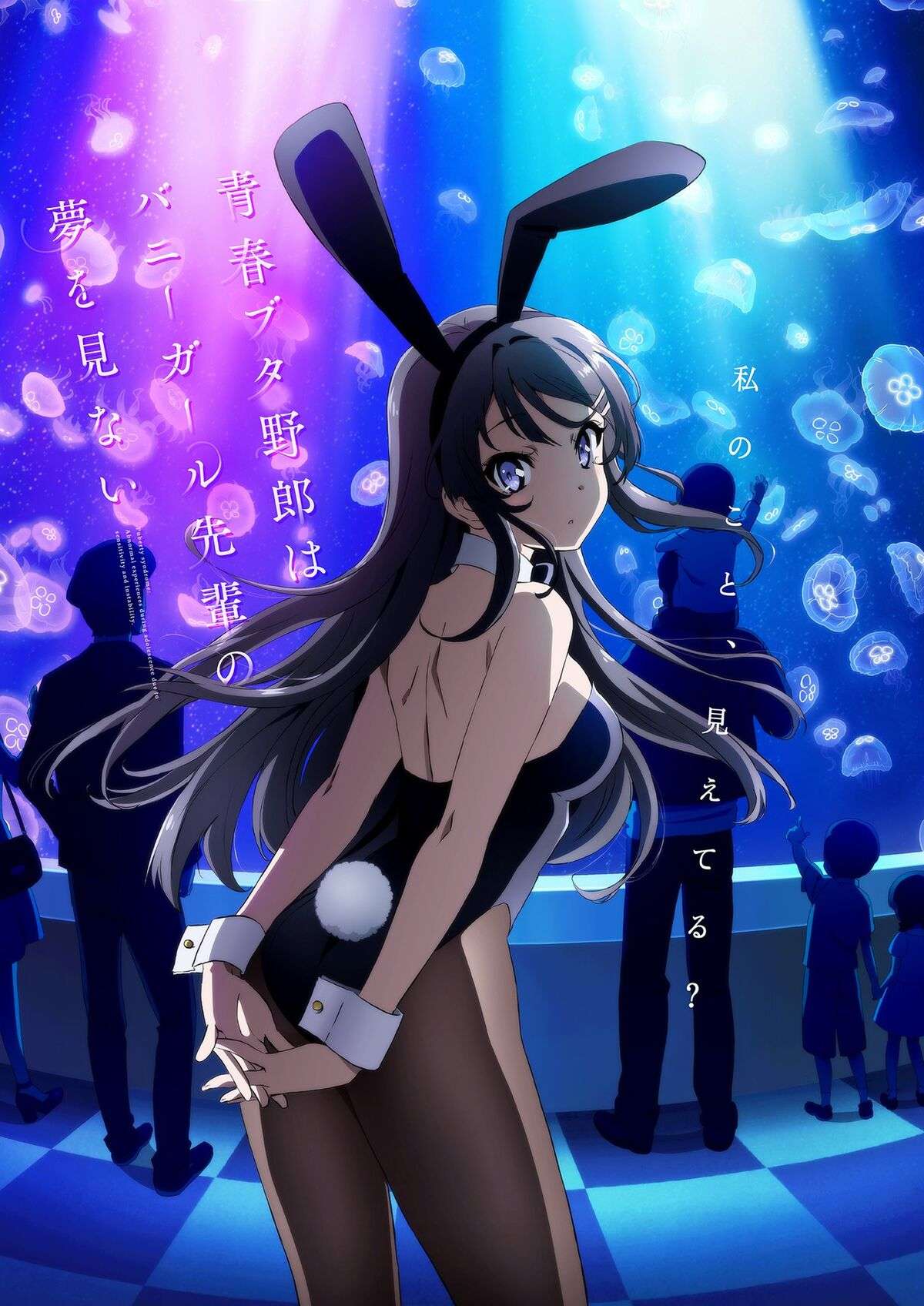
Puberty Syndrome is considered a myth because it is rare and inexplicable. The symptoms of this rare disease are so supernatural that hardly anyone recognizes it as a real condition. High school student Sakuta Azusagawa, however, knows that it is very much real and quite common at his school.
A third-year high school student, Mai Sakurajima had a successful acting career as a child, but her career has stalled for mysterious reasons. It is well known that she is unapproachable, but no one dares interact with her-that is until Sakuta sees her hanging around the library in a bunny girl costume.
In spite of her getup, no one seems to notice her, and when he confronts her, he realizes that she suffers from Puberty Syndrome. In his efforts to help Mai, Sakuta comes into contact with more girls suffering from the elusive disease.
There are two main characters, but their personalities differ greatly, so they become more vivid as a result of the contrast. The characters aren’t the typical high schoolers with the same generic background as most high school shows. There is chemistry between them. While sharing secrets with one another, they tease each other and constantly try to outdo each other.
Their conversations are interesting, even when talking about mundane things. This series has a very interesting story, and in each episode even, we are invited to think about how to solve the problems they are facing.
If you like animes that are not cliches, in which there are great characters, romance that progresses, and of course, an excellent protagonist, then this is an anime that you should watch.
15. Ping Pong the Animation
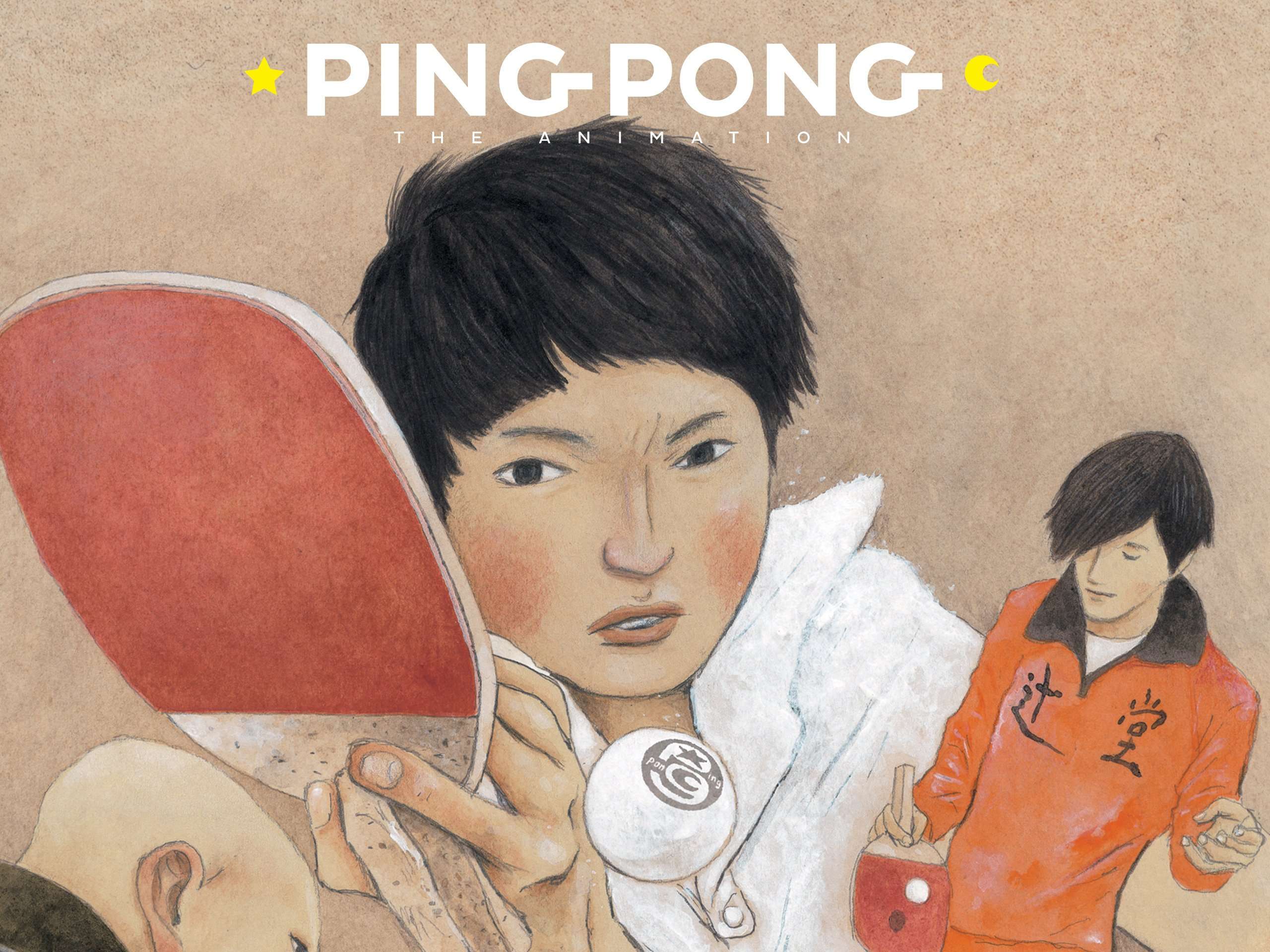
Makoto Tsukimoto repeats, “The hero comes. The hero comes. The hero comes. Chant these words in your mind, and I’ll surely come to you…” this mantra as a source of motivation during ping pong matches as well as in other situations in his life.
It is not just Makoto who fights alone: his friend Yutaka Hoshino also fights with him, and they are nicknamed Smile and Peco, who spent their childhoods playing ping pong together. Peco, filled with confidence, wants to be the best table tennis player in the world; Smile, on the other hand, shows little ambition. However, the two have always remained close, with a bond built on their mutual love for this sport.
In the inter-high table tennis competition, students from all over Japan compete to achieve national and international stardom. But only the very best survive.
A tale of ambition and bumps in the road accompanies Ping Pong the Animation. No matter what the odds, Peco and Smile will deal with them together.
It is an exceptional show. This is less of a sports anime and more of a powerful emotions series. It’s a beautifully crafted coming-of-age story and one that certainly doesn’t come along often. In a word, it’s unconventional. Nothing about Ping Pong feels ordinary; it’s hard not to recognize its artistic merit.
Where Ping Pong really shines is its characters. The amount of development in such a short time is staggering. The interactions between characters are astoundingly genuine; every conversation feels natural. There’s meaningful growth in even the most unlikely people, and this is a breath of fresh air from shows where nothing seems to change.
16. Shouwa Genroku Rakugo Shinjuu
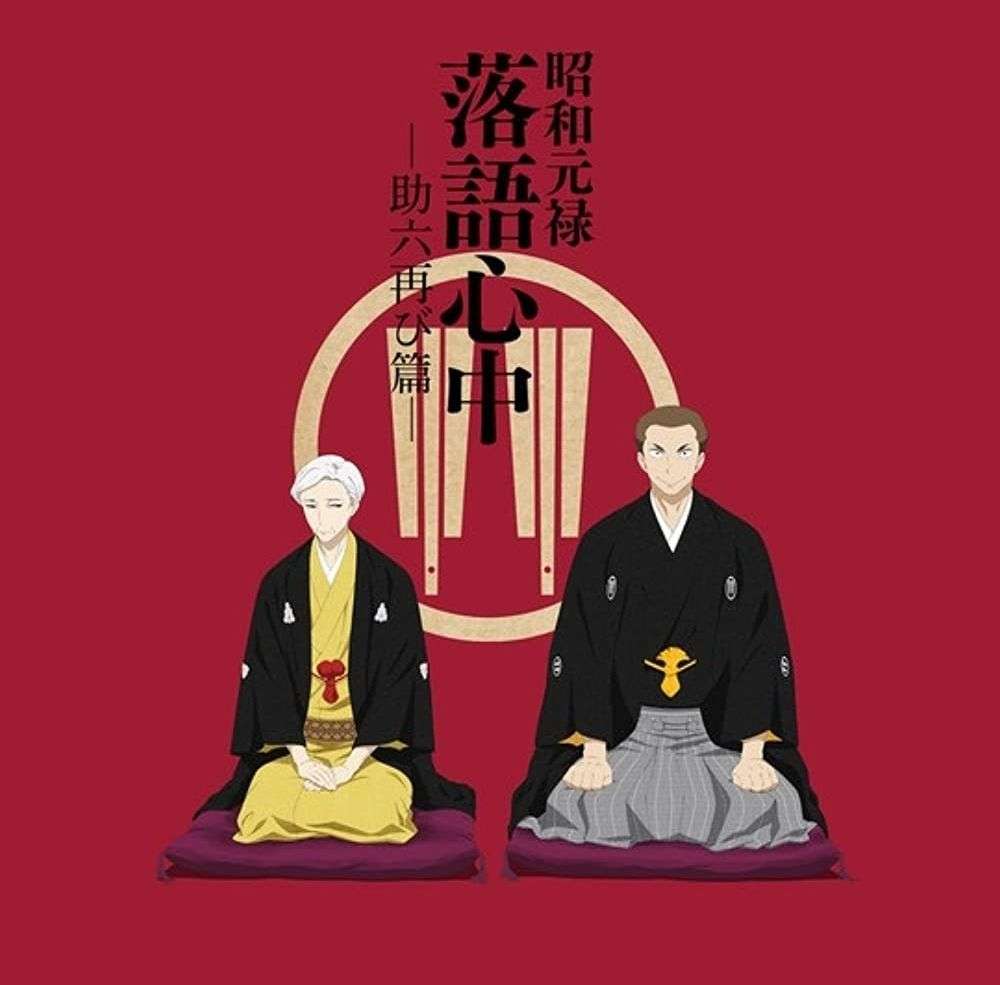
Yotarou, a former yakuza member recently released from prison, has one goal: he wants to become a rakugo performer, an old tradition of Japanese comedic storytelling. During his incarceration, he was inspired by Yakumo Yuurakutei’s performance and determined to meet the man who changed his life.
As a result of Yotarou’s desperate appeal for mentorship, Yakumo has no choice but to accept his very first apprentice.
Yotarou meets Konatsu as he eagerly begins his training. She has been under Yakumo’s care since her father, Sukeroku Yuurakutei, another prolific rakugo performer, passed away. In spite of studying under contrasting techniques, Yotarou is drawn to Sukeroku’s unique style of rakugo due to her hidden passion.
When Yakumo sees this, he recalls an earlier time when he made a promise to his greatest rival.
A visually striking story set both in the present and in the past, Shouwa Genroku Rakugo Shinjuu depicts the art of rakugo, its relationships, and those devoted to preserving the form.
In spite of its short length, Shouwa Rakugo covers a period of years and decades, a turbulent series of ups and downs, much like life itself.
An anime that covers so much ground in such few episodes would be expected to feel rushed, but this is not the case. Shouwa Rakugo strikes a careful balance between smaller and bigger events in the lives of his characters. A hospital scene will become a funeral within seconds, and yet it will seem as if no time has passed.
17. Kimi no Shizou wo Tabetai
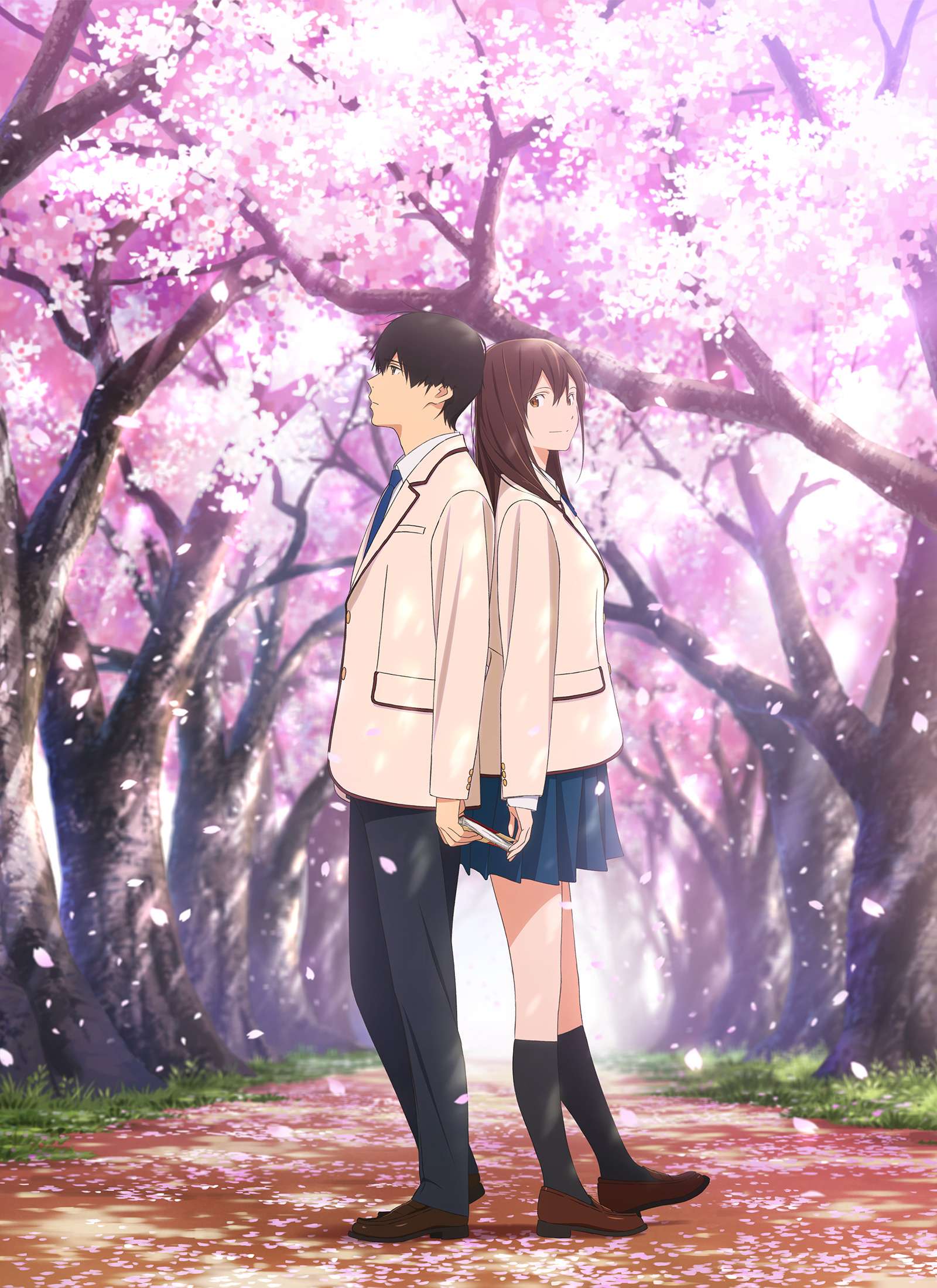
The protagonist is an aloof bookworm deep in thought and detached from the world around him. He is not interested in other people and believes that no one is interested in him either. He comes across a handwritten book titled “Living with Dying.” Soon he realizes it is the diary of his popular, bubbly classmate Sakura Yamauchi.
Later, she confides in him about the pancreatic disease she is suffering from and how little time she has left. The only people who know about her terminal illness are her family members; her best friends are unaware as well. Despite this revelation, he shows no sympathy for her plight, but when caught in Sakura’s buoyant tide, he eventually agrees to accompany her for as long as she needs.
In the course of each day, as the pair of polar opposites interact, their bond strengthens through the choices they make. As the protagonist’s impassive flow of life is disrupted by her unpredictability and nonchalance, his heart gradually opens as he discovers and embraces the true meaning of living.
If you knew you’d die in a year, what would you do? People want to live their lives to the fullest, fulfilling anything they want, traveling to impossible places, or possibly going on a spiritual quest in the name of God. The anime film will remind you of how to leave your mark in this world, how death eventually does come to us whether we like it or not, and how it can affect others for the better.
The anime is a great ride overall. Consequently, it serves as a good reminder to leave a good impression on people since they might change because of you—both for the better and for the worse.
18. Slam Dunk
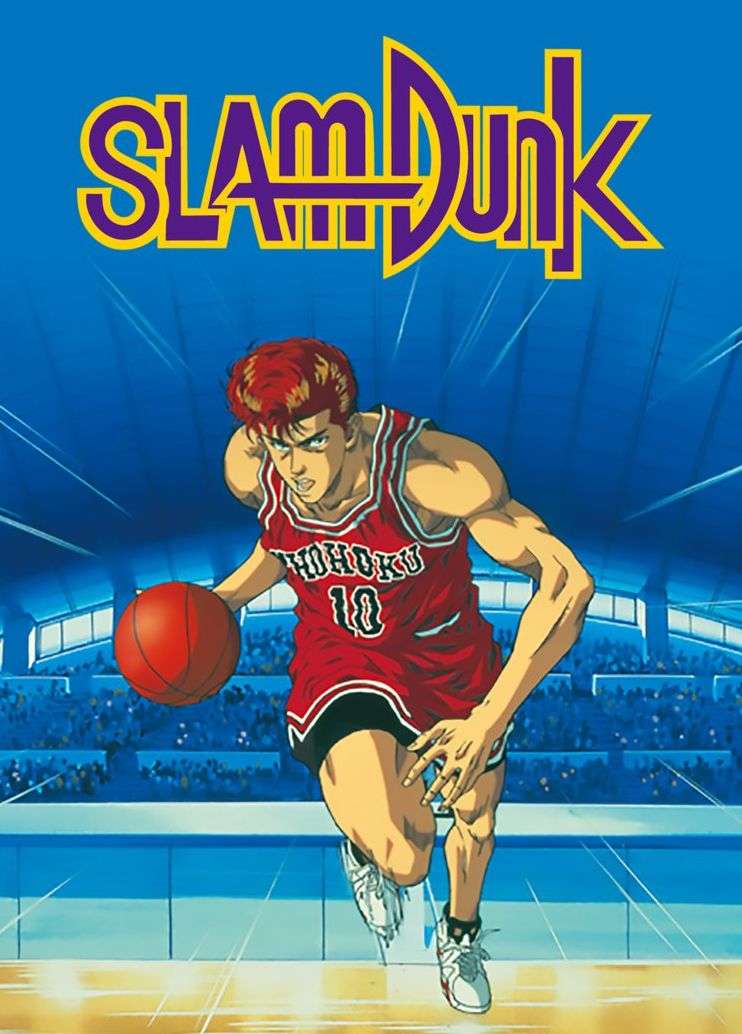
A temper-tainted, massively tall, and fire-red-haired student, Hanamichi Sakuragi enrolls in Shohoku High hoping to get a girlfriend and break his record of being rejected 50 consecutive times since middle school. Nonetheless, the notoriety that precedes him causes the majority of students to avoid him. Within a short period of time, Hanamichi has two unwavering thoughts: “I hate basketball” and “I desperately need a girlfriend.”
Haruko Akagi, a girl who was unaware of his troublemaking ways, approached him one day and asked if he liked basketball. Hanamichi is immediately head over heels in love with her, blurting out a passionate affirmative. She then takes him to the gym, where she asks him if he can slam dunk.
Attempting to impress Haruko, he leaps but overshoots, instead slamming his head into the blackboard. As Haruko informs the team’s captain of Hanamichi’s near-inhuman physical abilities, he slowly finds himself drawn into the camaraderie and competition of the sport he had once resented.
A touching aspect of the story is how strong the relationships become. Sakuragi’s gang is particularly loyal to him by supporting him so he can join the basketball team. Though Sakuragi and his friends may not have the best brains, they make up for it with their hearts, and that is what makes this anime so wonderful.
While Sakuragi plays basketball to impress a girl, you can watch him progress and cheer for him just like you would a friend starting something new. Although he has the genetics to succeed at the sport, he still has a lot to learn, and some of his struggles seem juvenile to those who at least know the basics. However, you feel his passion at the right times, and you hope he lives up to his potential.
19. Shingeki no Kyojin
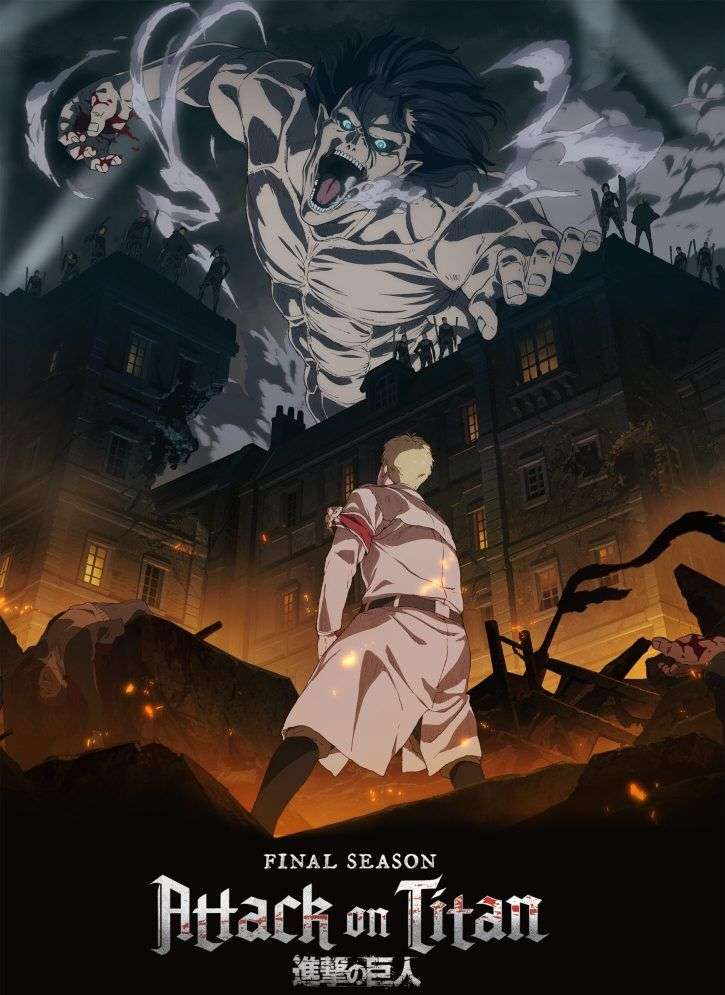
Centuries ago, humanity was nearly wiped out by monstrous humanoids called titans, who forced them to hide behind vast walls of fear. It is truly terrifying that these giants are not driven by hunger but by what seems to be pleasure, their desire for human flesh.
Humanity’s remnants began building defensive barriers to ensure their survival, resulting in a century without a single titan encounter. Despite the seemingly impregnable outer wall, a colossal titan breaches it, reigniting the struggle to survive with the man-eating abominations.
In response to witnessing a horrific loss at the hands of the invading creatures, Eren Yeager dedicates his life to their eradication by joining the Survey Corps, a military unit specializing in combating the merciless humanoids outside the protection of the walls.
Eren, Mikasa Ackerman, and Armin Arlert are all involved in the brutal war against the titans in Shingeki no Kyojin, attempting to discover a way to defeat them before the last wall collapses.
Shingeki no Kyojin is an excellent series that has everything we all dream every series would have. It is an amazing anime. The plot is one of the most fascinating stories you will ever see.
One of the anime’s strongest points is its characters. For various reasons, each character struggles for humanity.
Trust, friendship, betrayal, and pain all coexist. Several characters provide comic relief. It is easy to relate to the characters, who want to protect their friends, but seem powerless to do so because of fear. All of us are plagued by fear, and it prevents us from doing things in life.
20. Banana Fish
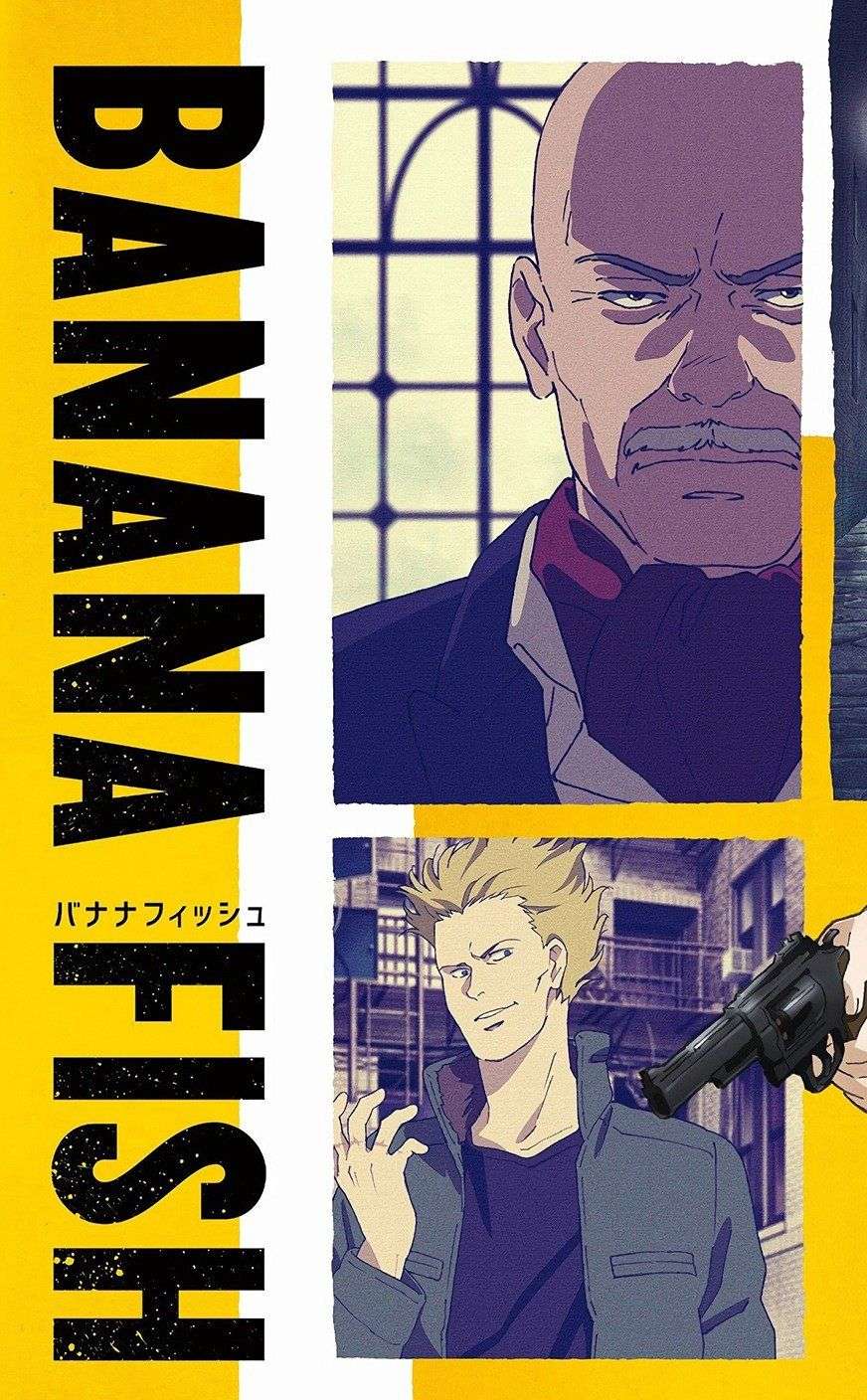
A runaway named Ash Lynx, born Aslan Jade Callenreese was raised by infamous mafia godfather Dino Golzine. Ash, now 17 years old and the boss of his own gang, begins investigating the mysterious “Banana Fish”-the same two words his older brother Griffin has muttered since he returned from the Iraq War. The inquiries are hindered by the fact that Dino sends his men to chase Ash at an underground bar he uses as a hideout.
Skip, Ash’s friend introduces Ash to Shunichi Ibe and his assistant, Eiji Okumura, two Japanese photographers reporting on American street gangs at the bar. As they talk, Shorter Wong, one of Ash’s allies, calls to warn him about Dino. Dino’s men storm the bar and kidnap Skip and Eiji in the ensuing chaos. Ash must now rescue them and continue his investigation into Banana Fish, but will his history with the mafia prevent him from succeeding?
The story of a protagonist named Ash Lynx tells a visceral tale about life and love in Banana Fish’s deplorable world full of death and sexual violence. Its two halves, like the darkness and light that pervade its two protagonists, Ash and Eiji, contribute to a grounded character drama that portrays both ugly and beautiful aspects of human nature.
Banana Fish does an excellent job of describing its important characters in a short amount of time and consistently developing them throughout. Therefore, characters and their interactions are both dynamic and engaging.
The vast majority of anime releases these days adhere to successful formulas and character stereotypes, but Banana Fish stands out as one of the rare few that doesn’t fear taking chances.
21. Josee to Tora to Sakana-tachi

Despite his passion for diving and admiration for marine biology, university student Tsuneo Suzukawa works several part-time jobs to earn enough money to study abroad. Then, one fateful night, he meets a girl in a wheelchair, driving him away from his current path.
Kumiko, who prefers to be called “Josee,” comes off at first as rude. Tsuneo is, however, convinced by Josee’s grandmother to take on the job as Josee’s caretaker. Tsuneo ignores her bossy demeanor in favor of saving more money to support his academic goals.
Tsuneo endures Josee’s behavior for some time before trying to quit, only to discover Josee’s dreams of exploring the outside world and experiencing freedom from her crippling condition.
Tsuneo changes his mind and decides to join Josee in exploring the wonders of the world. As they spend more time together, they begin to realize that the traits that bind them may be crucial to achieving their goals.
It is one of the lightest and heaviest movies out there. Even with its similar topics to some other animes out there, it feels nothing like it. The story of Josee contains several tropes, including cliches, but it is able to execute them when the moment is right and the result is pleasing.
What happened to Josee or Tsuneo could happen to anyone. Giving up your dream, unfortunate circumstances that forced you to give up, or not knowing where to go at some point in life can happen to anyone, and the most beautiful thing about this movie is how both of them find answers and overcome their obstacles.
22. Perfect Blue
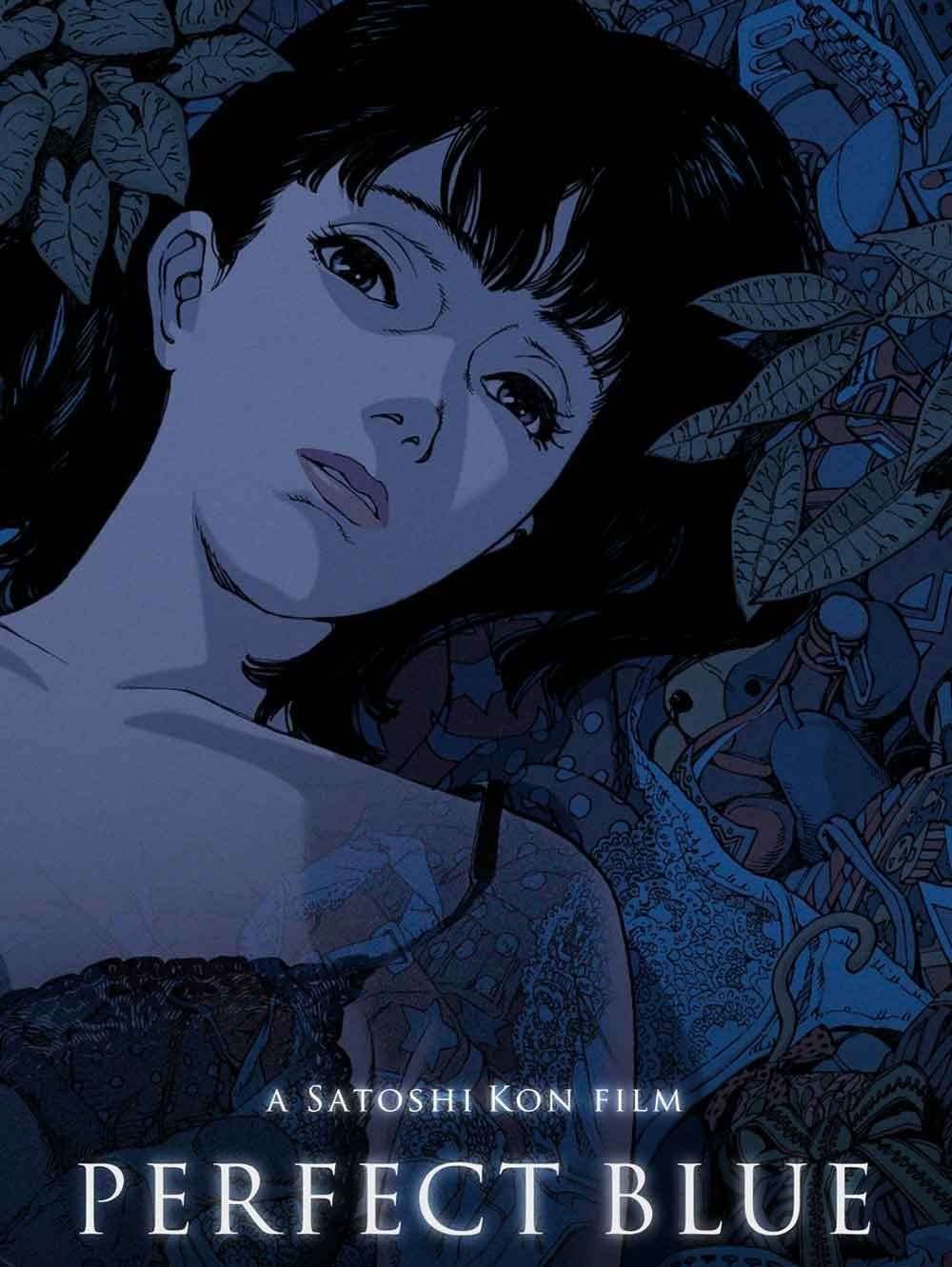
CHAM! is a J-pop idol group! It has entertained its fans for the past two years. However, all good things must come to an end and CHAM! must see the departure of one of its members, Mima Kirigoe, to pursue acting. Mima’s choice has been met with mixed reactions, but she hopes her fans will continue to support her.
Mima’s life changes dramatically after she leaves the group. As she strives to shed her pop-idol image, she takes on a role in a crime drama series, and her acting career gradually becomes more demanding and taxing for both Mima and her manager, Rumi Hidaka.
Mima’s growing unease is compounded when a stalking obsessed fan cannot accept that Mima is no longer an innocent idol; an anonymous website impersonates her life in intricate detail; and CHAM! seems to be doing better without her. Mima becomes unhinged with every disturbing development, unable to distinguish reality from fantasy as time passes.
Several topics are dealt with in the story that few other works in the medium do, such as the loss of innocence and the perception of reality. While the audience is slowly immersed into Mima’s world, the film tackles these tough subjects without overwhelming them.
Perfect Blue has an intricate setup and appeals to so many psychological elements that it can be watched again and again, noticing new things every time. If you know the end, you can trace the story back to its origin. The second watch can be even better than the first.
23. Hotaru no Haka

In 1945, as World War II draws to a close, Japan is devastated by American bombings, destroying city after city. Seita and his sister Setsuko are two Japanese children whose lives are ravaged by the brutal war in Hotaru no Haka. The war has taken their mother, their father, their home, and the prospect of a bright future.
Seita and Setsuko, now orphaned and homeless, have no choice but to drift through the countryside plagued by starvation and disease. The siblings are met along the way with the apathy of adults, yet their youthful hope shines brightly in the face of unrelenting hardship, preventing them from succumbing to an inevitable fate.
This film has neither heroes nor villains. The only heroic things Sata and Setsuko do throughout the movie are love and take care of one another. Even their aunt, who is harsh and unfair, is not the villain. Neither side of the war, either American or Japanese, is portrayed negatively.
It isn’t a war movie, nor does it condemn one side or another. The movie tells the story of two orphans trying to survive while their society crumbles around them. As these children stick together through all the hardships they face, it is heartbreaking to watch.
This movie is filled with symbolism. You might feel like you’re getting hammered over the head with the symbolism at times. It won’t bother you much.
24. Nana

Nana Komatsu is a naive and helpless 20-year-old who easily falls in love and becomes dependent on others around her. Though she harbors ambitious dreams of removing herself from her provincial roots and finding her true calling, she ends up traveling to Tokyo for the humble reason of chasing her current boyfriend, Shouji Endo.
While Nana Osaki, a proud and enigmatic punk rock singer from a similarly rural background, nurtures the dream of becoming a professional singer, comes from a similar background. She boards the same train as Nana Komatsu to Tokyo, putting her career in a fairly popular band and her passionate romance with an ex-member behind her.
Two young women with the same name are brought together in the metropolis by a fateful encounter, leading to a chain of events that result in them sharing an apartment. Their friendship deepens, and they try to support each other through thick and thin, their deeply intertwined lives filled with romance, music, challenges, and heartbreaks that will test their seemingly unbreakable bond.
A great thing about Nana is the characters – we see our own reflection in some of them and believe that such people really exist. The anime is proof that you can do well without the traditional tsundere, moe, and annoying childhood friends.
One of Nana’s strongest points is the story. Despite the plot being a typical shoujo tearjerker, the show has a magic quality that makes you cheer unconsciously for some characters and experience emotional events almost as strongly as the characters themselves. The story also exposes the harsh, brutish reality, which has no happy endings or pure love.
For fans of shoujo, Nana is a must-see show. We learn a lot about life, the hardships it brings, and an important lesson about not making the same mistakes again.
25. Fumetsu no Anata e
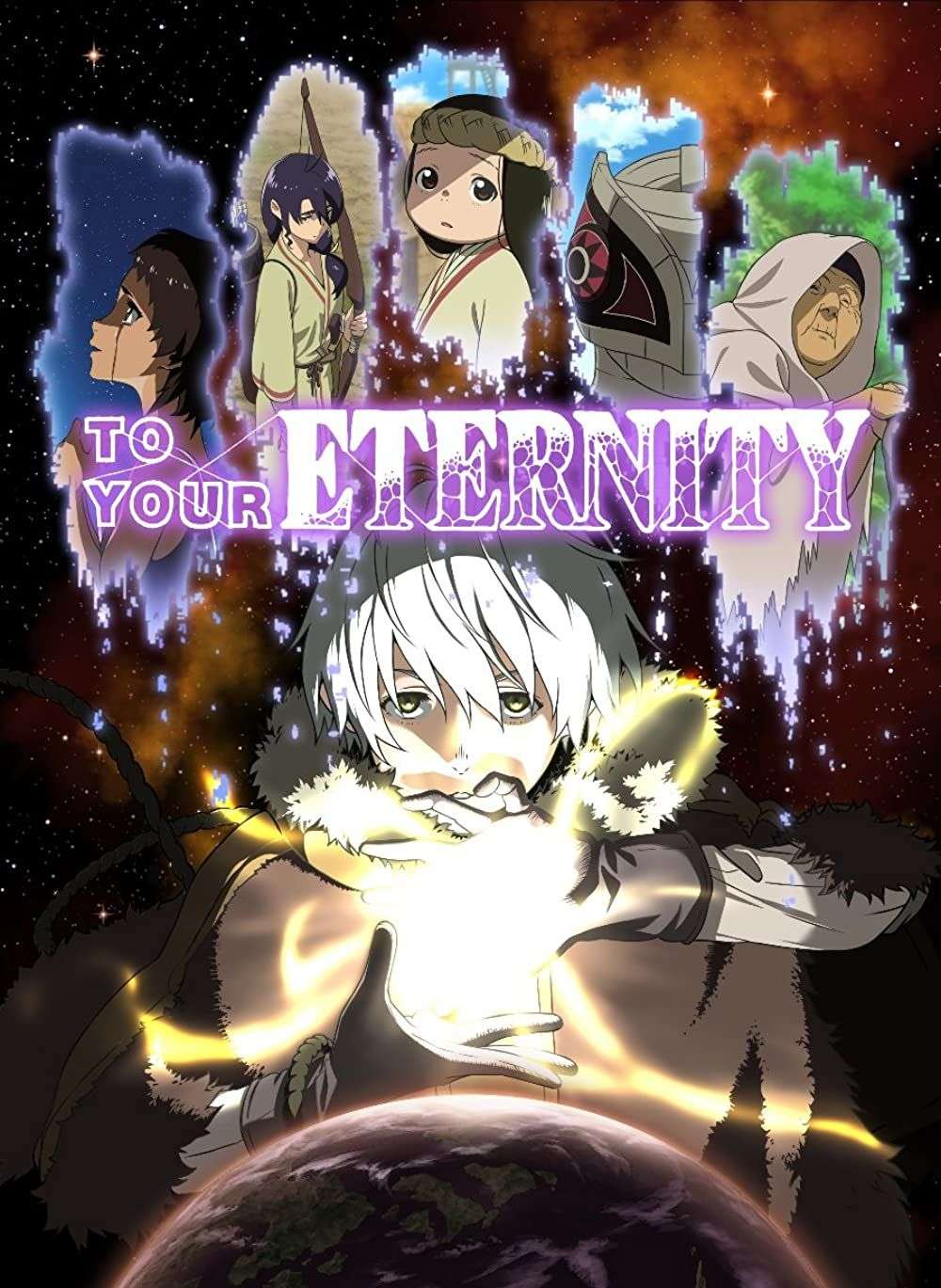
A mysterious Orb known as It is cast to Earth to be observed from afar. It is capable of changing forms from beings whose reflections it captures. At first, it becomes a rock, and then, when the temperature rises, moss.
There is no movement until one snowy day, a wolf at death’s door barely passes by to catch a glimpse of it. With the animal’s form, It becomes aware of its consciousness and begins to wander with an unclear destination in mind. Soon, It encounters the wolf’s master, a young boy who is waiting for his tribe to return from a paradise full of fish and fruit in the south.
While the boy is lonely, he still hopes that those he holds dear in his memories haven’t forgotten him and that he will be reunited with them one day.
To explore the world around him, the boy abandons his home with It to find paradise using the traces that his tribe left behind. What will happen to the boy, whose body is heavily injured and whose elder comrades are gone?
Throughout the story of Fumetsu no Anata e, an immortal character experiences humanity, meeting all types of people in many places.
It’s a beautiful anime. Not because it’s a masterpiece, but because it’s a journey. One about a hollow shell. This journey explores the brutal yet alluring qualities of human life. It is filled with both joy and pain. An incredibly condensed episode begins the show, giving a small taste of what it has to offer.
Life and death: what do they mean? These subtle themes enhance the uniqueness of the story. What makes humans, humans? Fumetsu no Anata e is not something you simply watch but feel.
26. Sayonara no Asa ni Yakusoku no Hana wo Kazarou
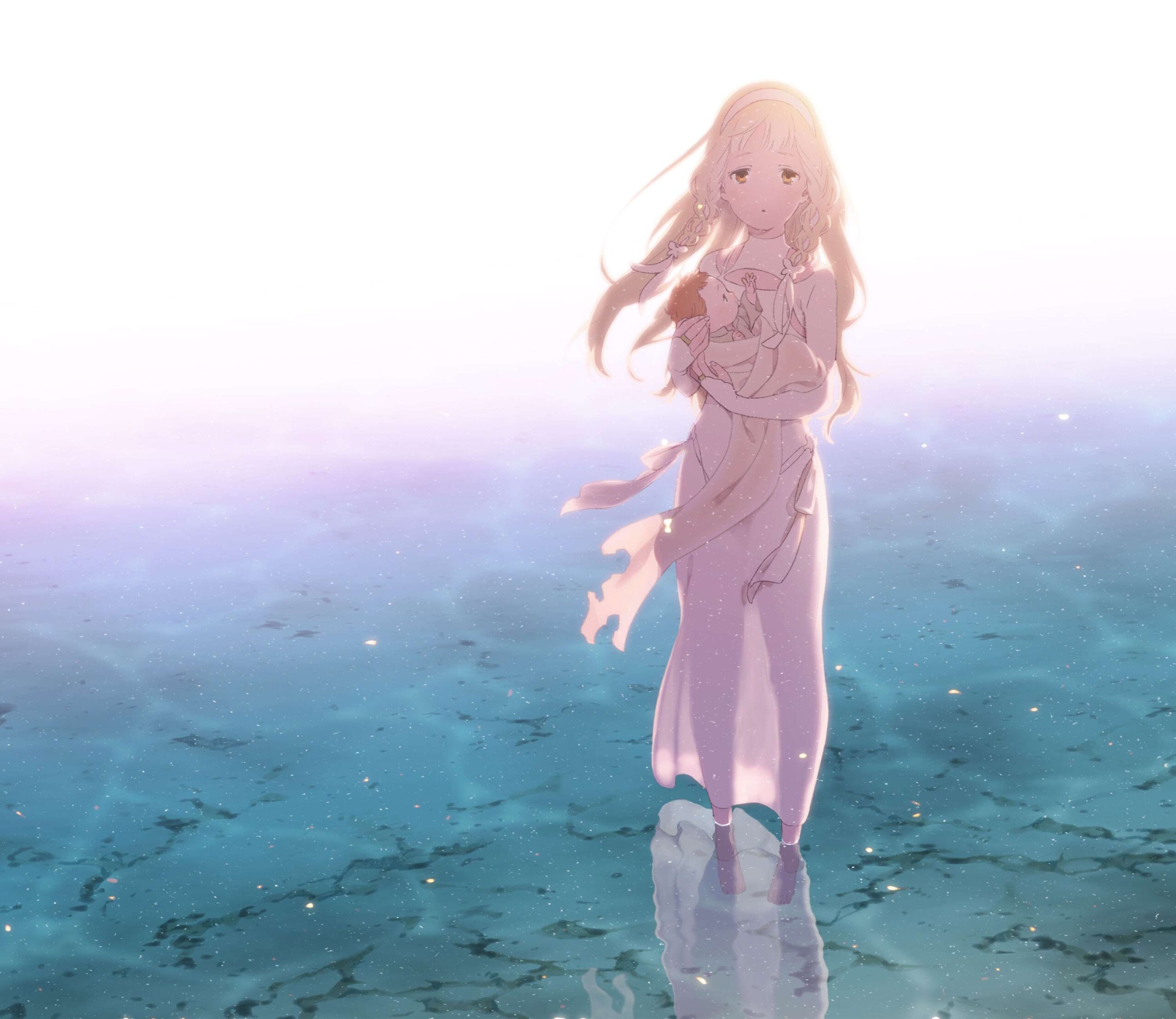
As an Iorph, Maquia can live for hundreds of years while remaining separate from the lives and worries of humans. Despite being surrounded by her family, Maquia has always felt lonely, as she was orphaned at a young age. While daydreaming about the outside world, she is afraid to leave her home because of the warnings of the clan’s chief.
Eventually, however, the outside world finds her, as the power-hungry kingdom of Mezarte invades her land. Their king has already taken over what is left of the giant dragons, the Renato, and wishes to add the immortality of the Iorph to his bloodline.
The human race and its Renato ravage the Iorph homeland, killing most of its inhabitants. Maquia is taken by one of the Renato that has gone berserk during the attack. She is soon abandoned in a forest far from home, alone save for the cries of a single baby far off in the distance.
The baby is found by Maquia in a destroyed village, and she decides to raise him as her own. She names him Ariel. Despite knowing nothing of the human world, how to raise a child who ages much faster than she does, or how to cope with the smoldering loneliness inside, she is determined to make it all work.
Each element contributes to the ensemble, which gives the impression that the characters lived and learned a lot together, and that is one of the key strengths here. There is a good balance between the different plot elements, and the pace of each element keeps things interesting.
27. Kaze ga Tsuyoku Fuiteiru
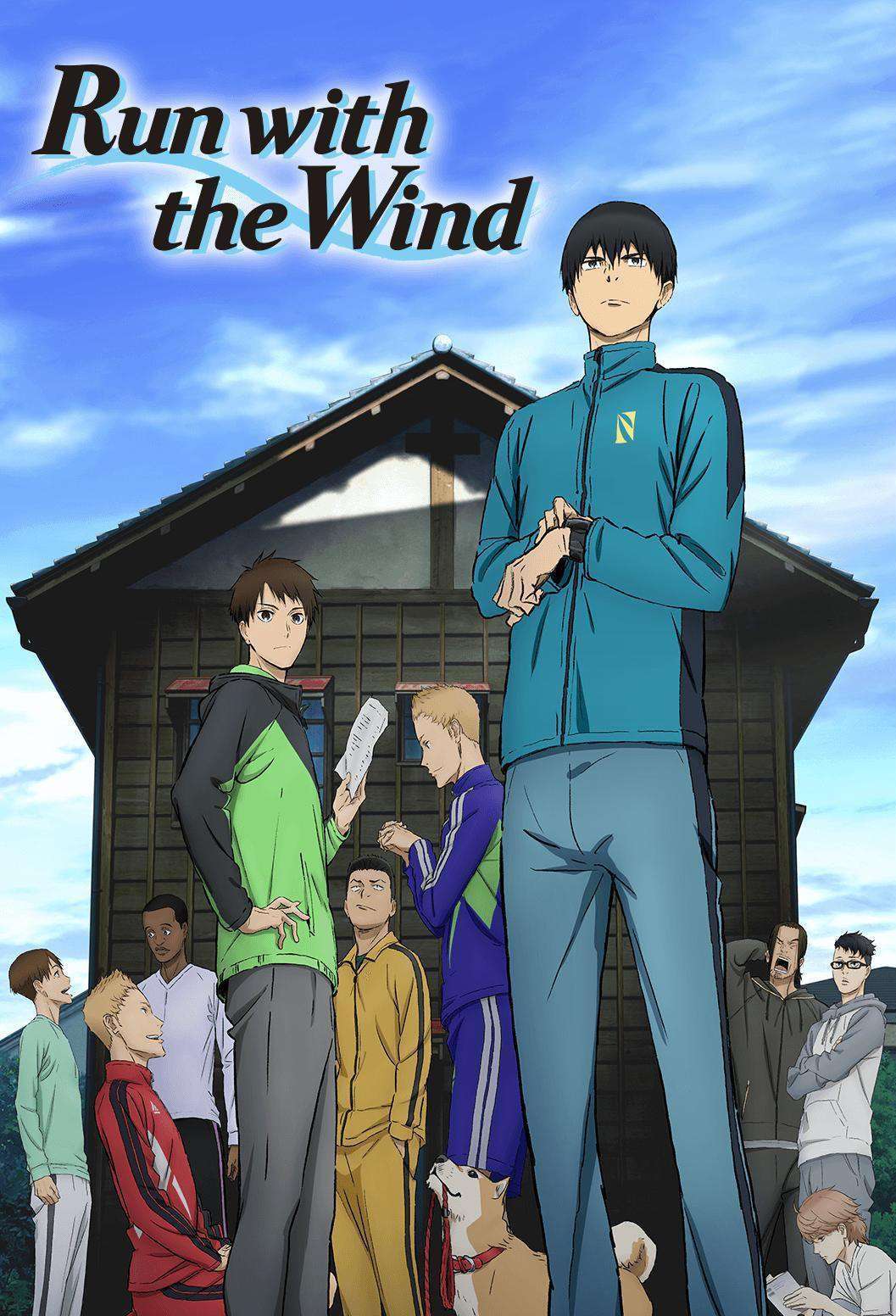
Kakeru Kurahara, the former ace runner at Sendai Josei High School, is chased from a convenience store for shoplifting. Having thrown off his pursuer, he runs into Haiji Kiyose, another student from his university. Kakeru’s agility makes Haiji like him, and he convinces him to live in Chikusei-sou, the run-down apartment where Haiji lives with eight other students. Kakeru accepts the offer reluctantly after losing his entire apartment deposit at a mahjong parlor.
During Kakeru’s welcome party, Haiji reveals a secret: the apartment is actually the dormitory of the Kansei University Track Club. In Japan, one of the most prestigious university marathon relay races, the Hakone Ekiden is his ultimate goal.
Sadly, all residents except for Haiji and Kakeru are utterly new to running. Even worse, none of the inhabitants are even remotely interested in participating in Haiji’s ridiculous plan! Can the fourth-year student convince them otherwise only months before the deadline and achieve his elusive dream of running in the Hakone Ekiden?
As the show progresses, Kakeru realizes he isn’t running alone and that he has friends with whom he can run. Kakeru’s journey is characterized by how he overcomes his personal demons and moves beyond his past.
The anime sells drama at every turn while maintaining a great deal of realism. Throughout the storytelling, you will experience a story with its insightful character cast, and it will aim to evoke emotions in the viewers. As dramatic as the show can be, do also expect a decent amount of lighthearted moments and comedy.
This anime manages to develop its character cast while staying consistent with the storytelling.
28. 3-gatsu no Lion
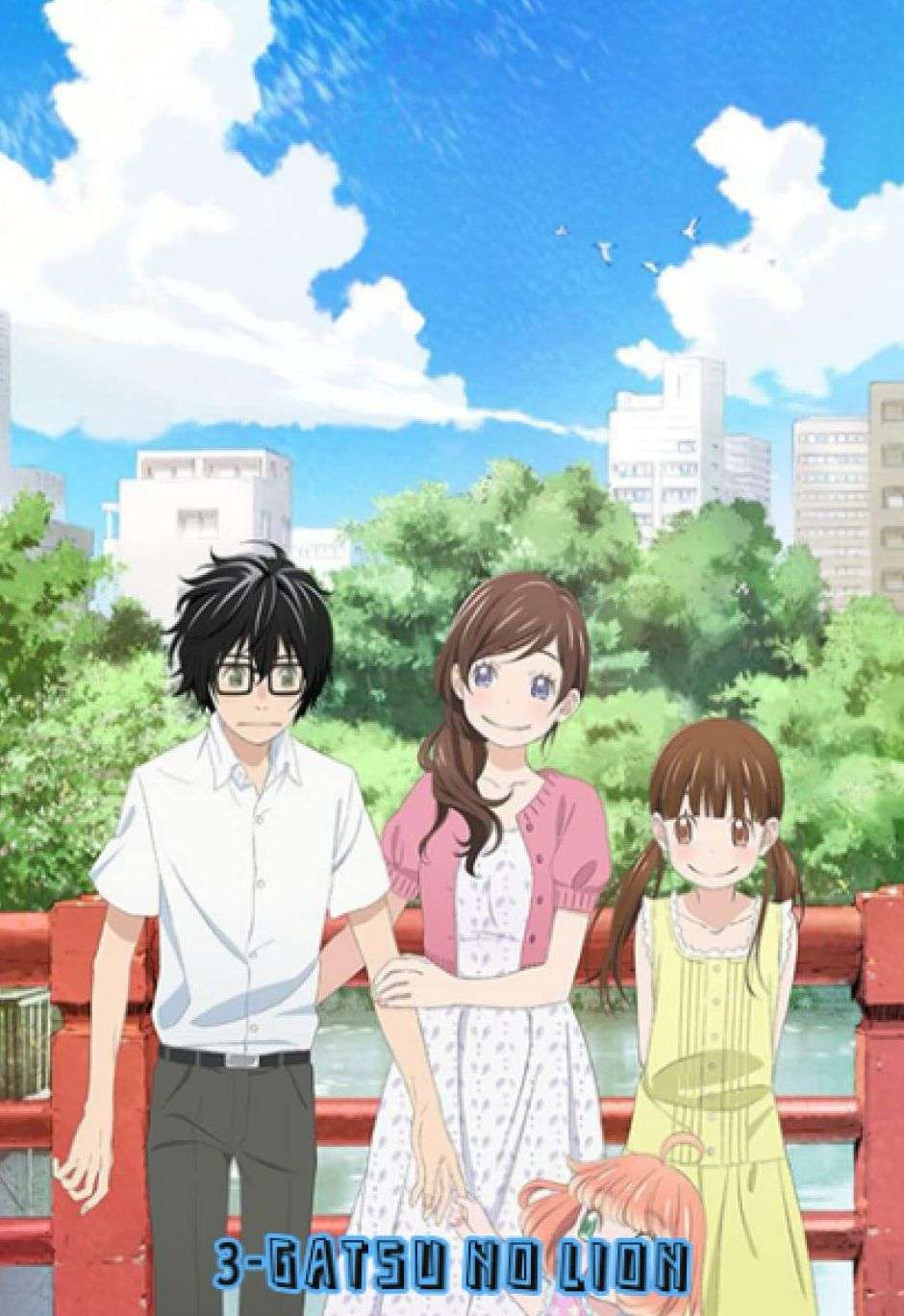
Among the few elite players in the world of shogi, Rei Kiriyama reached professional status in middle school. As a result, he faces tremendous pressure from both the shogi community and his adoptive family. Moving to Tokyo, he seeks independence from his tense home life.
Rei, a 17-year-old living alone, tends to mistreat himself, and his reclusive personality isolates him from his peers in school and at the shogi hall.
Not long after arriving in Tokyo, Rei meets Akari, Hinata, and Momo Kawamoto, a trio of sisters living with their grandfather, who owns a traditional wagashi shop. Despite Rei’s loneliness and poorly maintained lifestyle, Akari, the oldest of the three girls, is determined to show her motherly hospitality.
While the Kawamoto sisters have suffered past tragedies, they also share a unique bond with Rei that he has lacked for most of his life. He must learn how to interact with others and comprehend his own complex emotions as he strives to maintain himself physically and mentally throughout his shogi career.
To say that 3-gatsu no Lion is powerful would be an understatement. There are numerous moments that do much with little. Most things are left implicit and unsaid. A simple, everyday conversation between families about what their plans could be for the next day or a brief conversation about one’s quiet hometown can contain more weight and characterization than a series might in its entire duration.
3-gatsu no Lion is, at its surface, an anime about shogi but at its core a coming-of-age story of overcoming depression. This anime is a statement that unhappiness is ok. Being depressed, unsatisfied, or stressed does not make you weak – it makes you human.
29. Cross Game
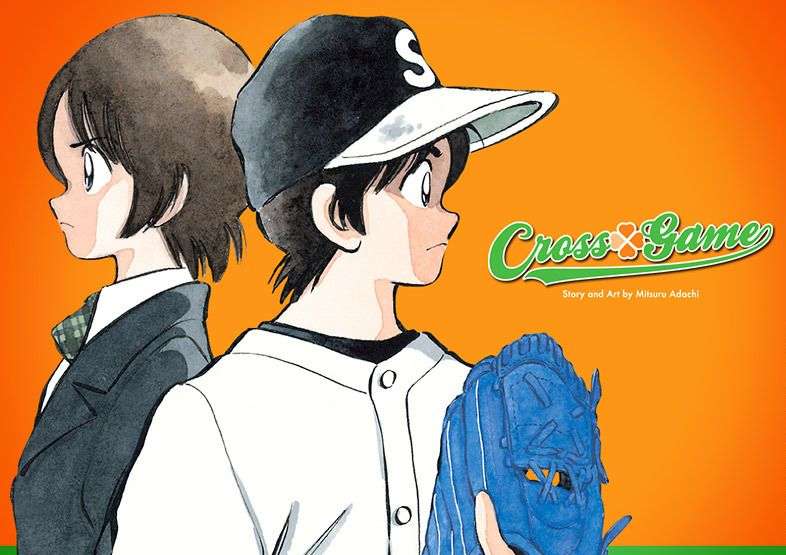
Aoba Tsukishima and Kou Kitamura are often at odds even though their families are close friends and business partners. Despite being the only child of a sports shop owner, Kou has never been interested in baseball. While this may be the case, he possesses impressive batting ability honed through frequent visits to the local baseball batting center run by the Tsukishima family. Aoba, on the other hand, loves to play baseball and has excellent pitching form.
They do share one thing, though — Wakaba Tsukishima, Aoba’s older sister and Kou’s destined sweetheart. With the quarrelsome duo admiring her, Wakaba finds herself becoming the flashpoint in their never-ending argument.
It’s only a matter of time before they realize they have more in common than either of them would care to admit. Baseball could just be what the pair needs to overcome their own struggles.
It is a slow-paced, tension-filled series. Even though it is somewhat predictable, Cross Game is well executed. The jokes are masterfully timed and clever, despite sometimes seeming clichéd.
Cross Game is able to nail the juxtaposition of the serious and the silly almost every time. It ensures each joke is cracked just the right number of times and at the right time. The frivolity of their banter is not wasted either. Even the lightest of jokes serves a purpose to further an emotional connection between the character and the audience.
The cast of Cross Game is one of the most memorable in all of anime. You won’t be able to dislike any character since each one is developed so well. The main cast’s struggles, hardships, and triumphs will make you sympathize with them.
30. Houseki no Kuni

Crystalline creatures called Gems inhabit a world that has been destroyed by six meteors in the mysterious future. Gems are assigned roles in order to fight against Lunarians, a species that attacks them in order to shatter their bodies and use them for decorations.
Phosphophyllite, or Phos, is a Gem who dreams of helping their friends in the war effort. Due to their delicate condition, they are instructed to compile an encyclopedia instead. Cinnabar, a gem who has been relegated to patrolling the isolated island at night because their bodies produce a corrosive poison, is met by Phos after reluctantly undertaking this task.
Seeing how Cinnabar is unhappy, Phos decides to find roles that both Gems can enjoy. Throughout Houseki no Kuni, Phos tries to be useful and protect their fellow Gems.
This theme follows the idea of change. A change of character, a change that Phos and their fellow gems desire. In this way, death and rebirth are symbolically depicted.
The anime is, for the most part, a joyful adventure that may even inspire laughter. However, if you let your guard down too long, the Lunarians will take away everything you hold dear, leaving you devastated.
The story is, at its core, a story about how flawed we are as individuals. There will always be means to improve until we finally reach the end of the cycle. Irrespective of whether this series has all of the answers, you’ll want to hear the story it has to tell about the questions.
31. Kiseijuu: Sei no Kakuritsu
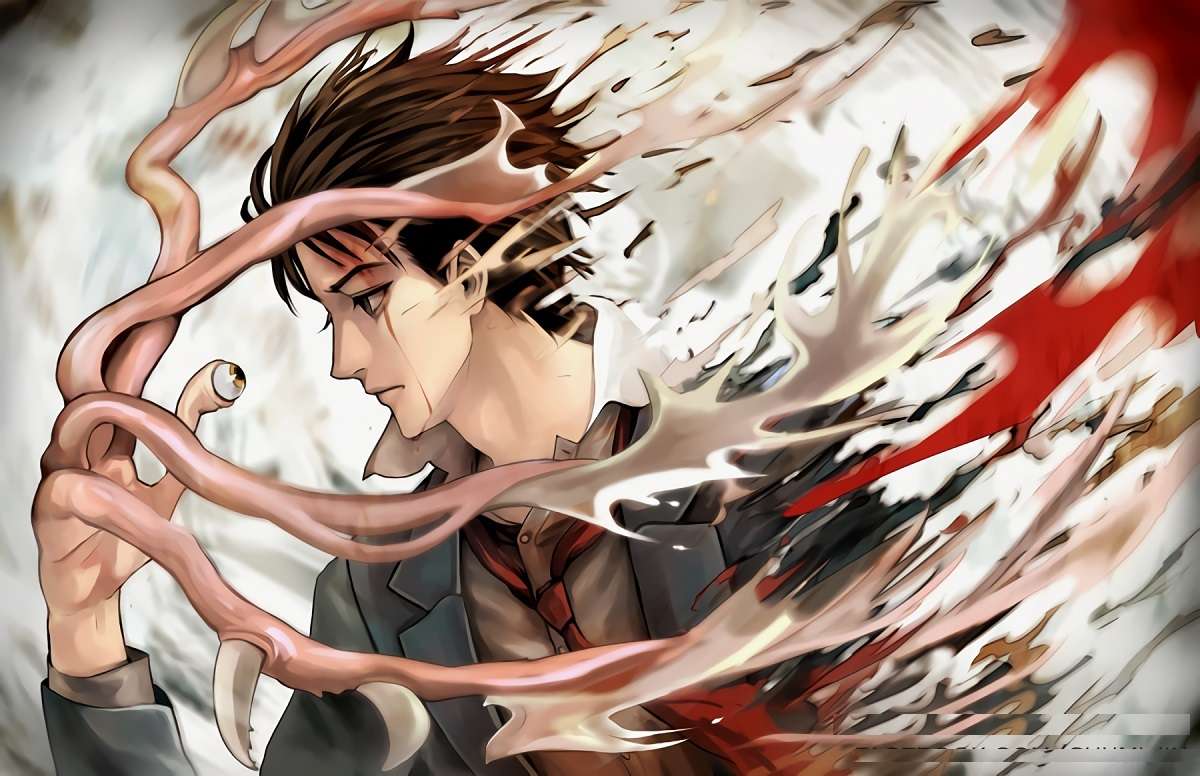
Suddenly, they appeared: parasitic aliens that invaded Earth and infiltrated humanity by burrowing into the brains of vulnerable people. The insatiable creatures acquire full control over their hosts and are able to morph into a variety of forms so that they can feed on unsuspecting prey.
High school student Shinichi Izumi, 16, is infected by one of these parasites, but the parasite does not take over his brain and remains in his right hand instead. Having no choice but to rely on Shinichi, the parasite, now named Migi, is unable to relocate. As a result, the two are forced into an uneasy coexistence and must defend themselves from hostile parasites that hope to eradicate the threat.
Perhaps you’ve heard of them before in classic sci-fi stories; the idea of aliens who can steal human bodies and impersonate humans. Build on the foundation of science fiction and body horror, Kiseijuu takes full swing with its premise. In just its first episodes, Kiseijuu sets a high bar with such an engaging premise.
In addition to conveying human nature well, the series’ storyline focuses on more than just outlandish battles for survival. As well as showing the best and worst of what humans are capable of, it also shows how parasites are able to act.
Sometimes, there’s almost a similarity, while others stand in sharp contrast. Throughout the story, Shinchi undergoes major changes, as certain events create tragic scars on his life. These changes are reflected both physically and mentally.
32. Mahou Shoujo Madoka★Magica

Sayaka Miki and Madoka Kaname are regular middle schoolers with regular lives, but that all changes when they encounter Kyuubey, a magical familiar that looks like a cat, and new transfer student Homura Akemi.
Kyuubey offers them a deal: he will grant any wish they desire, in exchange for which they will become magical girls with enough power to realize their dreams. Homura Akemi, a magical girl herself, says that everything is not what it seems.
Mahou Shoujo Madoka Magica is a tale of hope, despair, and friendship that reveals the difficulties magical girls face and the price they must pay to realize their dreams.
In a well-planned, carefully executed series of events, the story is introduced to the audience, and important plot elements are revealed. Every time it is done, viewers are on the edge of their seats as they wonder what exactly is happening.
New characters are introduced along the way; each has a specific role; their backstory is explored, and each will have a special moment in the series. This show is never dull; each episode is packed with excitement and details that keep the viewers looking forward to the next one.
This anime features a limited number of characters. Because of this, each important character in the series develops and changes in unexpected ways. We learn about the pasts of some characters, the reasons for their actions, and their feelings, among other things, giving each character a unique feeling.
The patterns they follow are unpredictable. Although the characters are intriguing, and the art will captivate you, the plot is undoubtedly the most intriguing aspect of the series.
33. Ano Hi Mita Hana no Namae wo Bokutachi wa Mada Shiranai
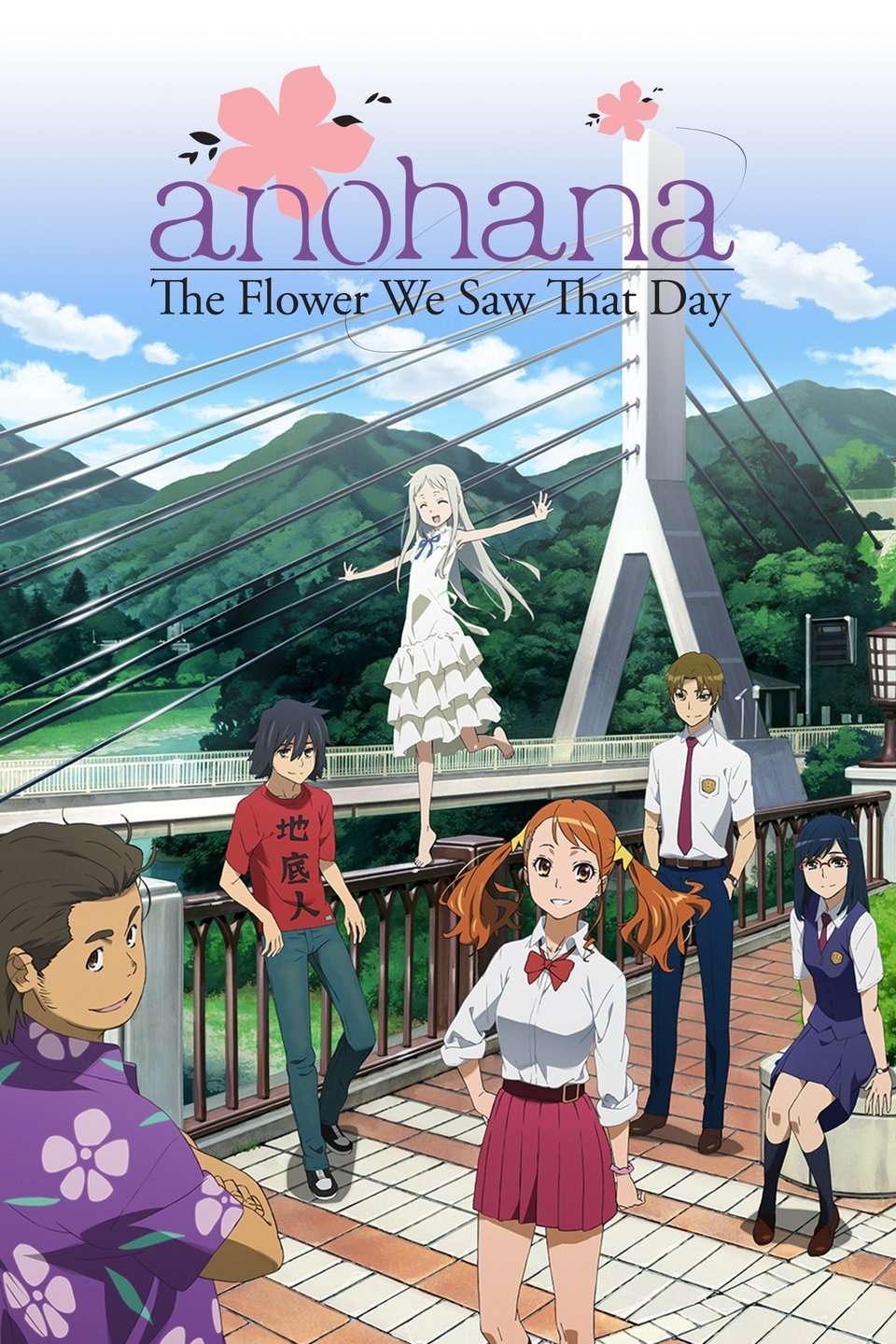
As a recluse, Jinta Yadomi spends his days playing video games instead of attending school. On a hot summer day, he is pestered by his childhood friend, Meiko “Menma” Honma, to grant a forgotten wish. The fact that he pays her no attention irritates her, but he isn’t interested. Menma already passed away years ago.
Jinta initially thinks he is hallucinating due to the summer heat, but he becomes convinced that the ghost he sees is Menma. He and his childhood friends grew apart after Menma’s death but are brought together once again by the attempt to lay Menma’s spirit to rest. Having relived their pain and guilt, will they be able to find the strength to help not only Menma but themselves as well?
From the outside, AnoHana seems like a simple story about teenagers dealing with past trauma and maturing as a result. That’s true to a certain extent. In the narrative’s often placid tone, there is a measured, almost methodical approach to events reflected in the plot.
In the anime, one of the most surprising aspects is the use of flashbacks to punctuate events and provide historical context for Jinta, Menma, and the other Super Peace Busters. In contrast to the current state of the characters’ relationships, these memories serve as a poignant reminder of how much their lives have changed.
Visually, it’s reflected in the Super Peace Busters – while almost all of them have a distinctive look, it’s the context that makes it stand out.
In AnoHana, we see how children and adolescents cope with past trauma through surprisingly simple and sentimental means. As an anime, AnoHana is one of the best examples of how good a truly unique anime can be.
34. Given
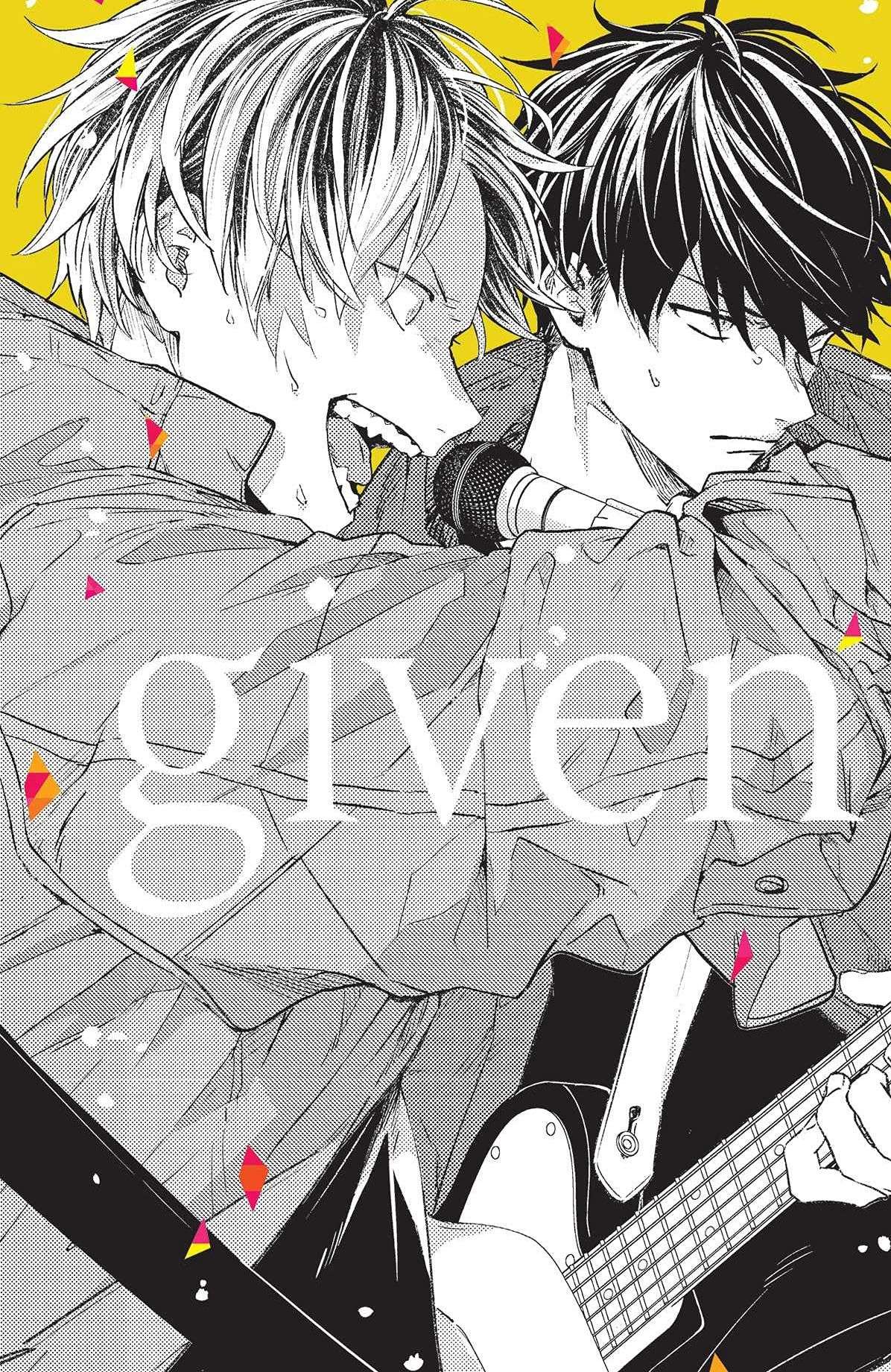
Holding tightly to his Gibson guitar, Mafuyu Satou steps out of his dark apartment to begin another day of high school. Taking a nap on the staircase of the gymnasium, he meets fellow student Ritsuka Uenoyama, who berates him for letting the strings of his guitar rust and break.
Seeing Uenoyama’s knowledge of the instrument, Satou asks him to teach him to play it and fix it. Eventually, Uenoyama agrees and invites him to sit in on a jam session with his two bandmates: bassist Haruki Nakayama and drummer Akihiko Kaji.
Satou’s voice is so strikingly beautiful that Uenoyama is determined to make him the lead singer of the band. Even though he is initially reticent, Satou accepts the offer after an emotional meeting with an old friend. Aside from learning how to play guitar with his new friends, Satou also must deal with the mysterious circumstances that led him to become its owner.
Given strikes a rare balance between being openly gay and not overdoing eroticism in order to appeal to a niche audience. This is a sweet, realistic, down-to-earth romance that anyone who is open-minded to love that goes beyond conventional desires can enjoy.
Characterization is unusual in a single-course romance, but Given makes this a strong point. Every bandmate has practical goals, motivations, and backstories that are woven into the narratives as the episodes progress rather than forced into a short period of time.
It is because of this methodical progression that the episodes flow smoothly, as no episode has a dominant character focus. Unlike many romance anime series today, Mafuyu and Uenoyama’s relationship is grounded on principles that reflect real-life relationships in the real world.
35. Clannad
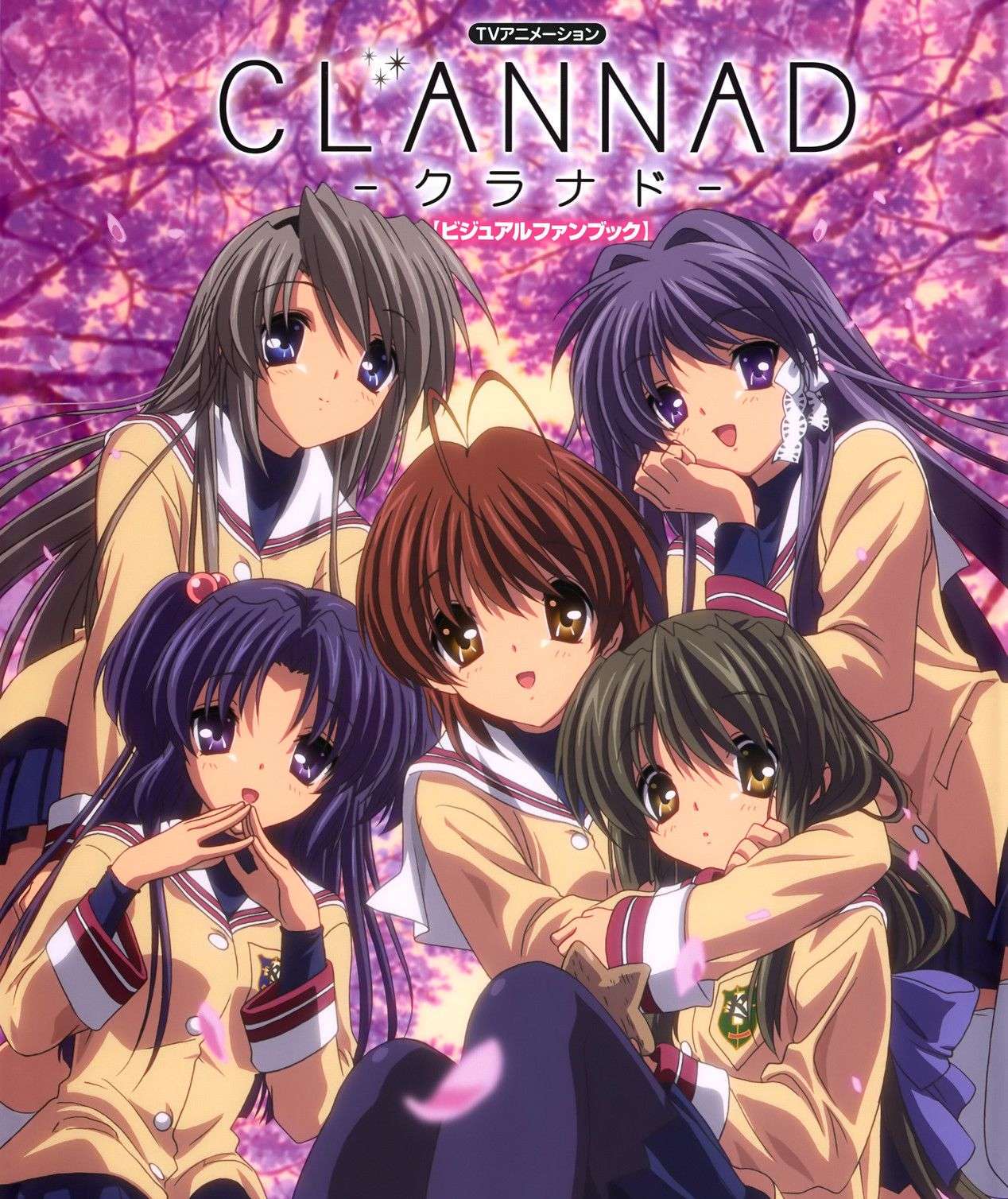
A delinquent named Tomoya Okazaki believes life will never amount to much and finds it dull. During his high school days, he skips school and wastes his time with his friend Youhei SunoharaOne day as Tomoya is walking to school, he observes a young girl muttering quietly to herself. Tomoya’s attention is piqued when she exclaims “Anpan!”, a popular Japanese food. The girl tells him her name is Nagisa Furukawa and that she exclaims things she enjoys in order to motivate herself. Nagisa declares they are now friends, but Tomoya walks away, dismissing the encounter.
Nevertheless, Tomoya notices Nagisa more and more around the school. Eventually, he gets friendly with her. Nagisa tells Tomoya her dream is to revive the school’s drama club and that she’s been held back for a year due to a severe illness. With the help of four other girls and claiming he has nothing better to do, he decides to help her achieve her goal.
Tomoya spends more time with the girls and learns more about their problems as he spends time with them. By helping each girl overcome her own obstacle, he starts to realize life isn’t as boring as he once believed.
Clannad does an amazing job with the characters once they’ve been introduced. Aside from their struggles being depicted in a gripping, compelling way, they are also shown to become strong individuals who stand by their friends and who are able to face the world and its challenges with greater openness.
Through the drama club, the main characters of the show may just form their own little family. The main and supporting cast in Clannad has unique personalities, at least one of which will pique a fan’s interest.
36. Mushoku Tensei: Isekai Ittara Honki Dasu

The story of a thirty-four-year-old shut-in who attempted something heroic despite being bullied, scorned, and oppressed all his life, only to end in tragedy. By chance, he awakens in another world as Rudeus Greyrat, starting over as a baby born to two loving parents.
As he retains the memories and knowledge from his previous life, Rudeus adapts quickly to his new environment. In his mind of an adult, he begins to show magical talent which exceeds all expectations with the help of a mage named Roxy Migurdia. In addition to learning swordplay from his father, Rudeus meets Sylphiette, a girl his own age who quickly becomes his closest friend.
In spite of his traumatic past, Rudeus tries to make the most of his second chance at life. Possibly, one day, he will find the one thing he could not find in his old world-love.
In the course of the show, we meet more lovely characters. They are characters you’ll like. Unlike most isekai anime, this show doesn’t immediately plunge our main character into an adventure. Rather, it focuses more on world-building and the cast of characters.
Through Rudeus’ experience with magic, it does not pile us with crappy monologue to establish the world. In addition to building a deeper connection between the viewer and the characters, this allows more time for viewers to become immersed in the show. It takes baby steps in introducing this new world instead of shoving introductions into one single episode, something that several shows, unfortunately, incorporate too often.
37. Uchuu Senkan Yamato 2199

The Gamilas Empire has relentlessly bombarded Earth with planet bombs, turning Earth’s once green hills and rich oceans into a desolate wasteland. As of 2199, humankind has fled underground cities to escape radiation.
There is still hope, however, as the distant planet Iscandar offers Earth its final salvation: the Cosmo Reverse System, capable of restoring Earth’s irradiated surface. In a desperate attempt to retrieve this technology from Iscandar, the Earth Defense Force devotes its last remaining resources to the Yamato – a state-of-the-art battleship equipped with an infinite energy Wave Motion Engine.
Yamato’s crew consists of many individuals, each with a different level of experience on the battlefield, from young talents like Tactical Officer Susumu Kodai to seasoned veterans like Captain Juuzou Okita. Despite their differences, they share one common goal: to complete their perilous 168,000 light-year journey to Iscandar and save humanity.
You can appreciate Yamato’s story at any age and at any time. The story develops beyond its simple premise in many ways as the show proceeds. For the sake of keeping the audience entertained, many things are left to the imagination. As long as you accept them as they are and don’t complicate them, they are, for the most part, flawless. After all, we are in the realm of fiction.
Yamato never explicitly distinguishes between good and evil – at times, you will sympathize with the enemies, and at others, you will question the heroes’ motives. In this way, it’s one of those important aspects that help separate the wheat from the chaff. In the end, there is a very classical story at hand, and with it, classic characters.
38. Tenki no Ko
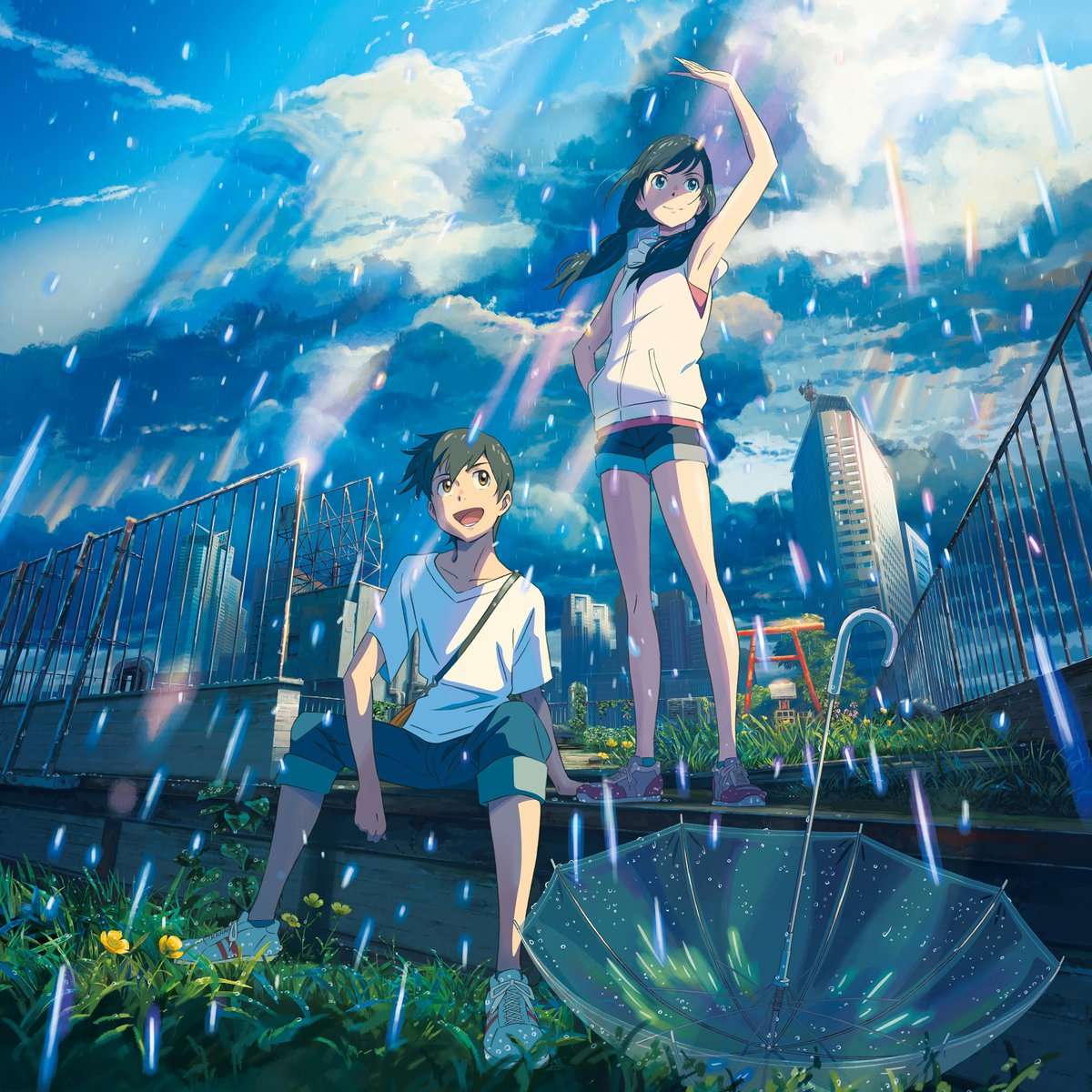
Rain showers are currently hitting Tokyo, disrupting the usual pace of life to no end. Hodaka Morishima, a runaway high school student who struggles to support himself financially, ends up working at a small-time publisher amid this seemingly endless rain. Meanwhile, Hina Amano, who is orphaned, also tries to find work to support her and her younger brother.
Hina and Hodaka’s fates are intertwined when Hodaka tries to save her from shady men, and they decide to run away together. Hodaka discovers later that Hina has a strange yet amazing power: she can call the sun to her whenever she prays. In the context of Tokyo’s unusual weather, Hodaka sees the potential of this ability. As a “sunshine girl,” Hina will be able to clear the sky for people when they need it most.
At first, things look up for them. It is well known that power always comes with a steep price.
As a result of having this power, a girl who can eliminate rain by praying uses it to her advantage, providing a well-paced storyline as well as a range of realistic yet interesting issues that arise. In a way, the characters in this film are refreshing because they’re not stupid or over-the-top.
Thankfully, there are no annoying anime tropes. They are two teenagers, each with their own problems: one tries to fit in in a strange new environment, the other tries to support her family. It is refreshing and realistic to see the interactions between the two main characters with nuances that make all the difference and propel the plot forward.
Everyone can understand and enjoy the plot of this film. It’s a Shinkai film, so simple doesn’t imply shallow. In each of his pieces, he explores a theme and conveys a message.
39. Hotarubi no Mori e
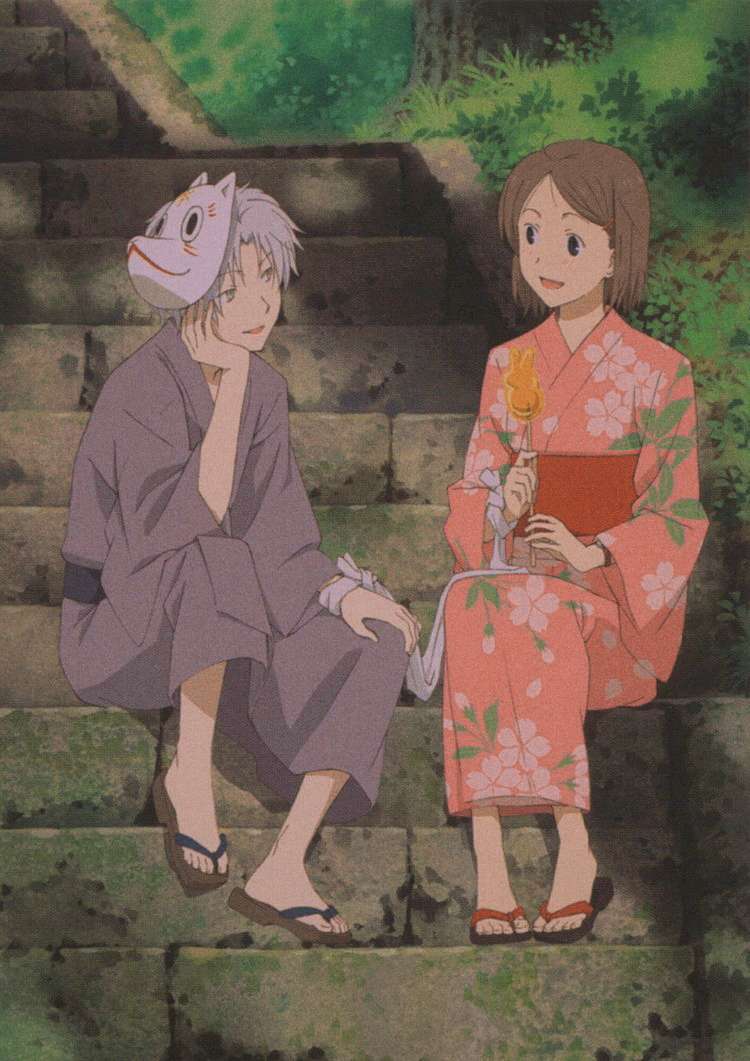
When six-year-old Hotaru Takegawa loses her way in the ancient forest while visiting her uncle, she is intrigued by the tale of a mountain god. Hotaru is overwhelmed and desperate for help when she discovers a masked forest spirit named Gin. The boy disappears when she touches him, and she has to learn the hard way that she shouldn’t touch him. Despite this, Gin leads Hotaru out of the forest and warns her never to return when she promises to return with a gift.
Hotaru, despite being separated by both distance and planes of existence, becomes close friends with Gin as she visits him every summer, despite his warnings. Their relationship and resolve, however, are put to the test when romantic feelings conflict with the one and only rule.
Hotarubi no Mori e depicts two individuals whose lives should not have crossed paths but become hopelessly intertwined as a result of their friendship.
There is a bittersweet end to their short but meaningful time together. In an elegant, refreshing way, Hotarubi no Mori e reimagines the concept of forbidden love, a topic that has been overdone and abused by bad soap opera dramas.
The anime’s brilliance is due to its beautiful character and background designs, as well as its honest writing. The anime captures us with its dramatic music and writing while remaining lighthearted and realistic.
Love is emphasized in the anime in a way we may have overlooked. There’s a joy to being near them, the first time you saw them laugh, and the feeling of being suffocated when you don’t know what to say or do around them. Throughout Hotarubi no Mori e, these elements are masterfully woven into a heartbreaking story of first love.
40. Sakamichi no Apollon

Among the top students at Kyushu’s high school is the revered classical pianist Kaoru Nishimi. After constantly moving from place to place since he was a child, he gives up all hope of fitting in, preparing himself for another year of loneliness and meaninglessness. But then he encounters Sentarou Kawabuchi, the notorious delinquent.
It is Sentarou’s love for jazz music that inspires Kaoru to learn more about the genre, and as a result, he slowly starts to break out of his shell, making his very first friend. Kaoru begins to play the piano at after-school jazz sessions in the basement of Ritsuko Mukae’s family-owned record store.
If Kaoru discovers that he can use his musical talents to bring enjoyment to himself and others, his summer might just crescendo into one he will never forget.
The heartwarming story of Sakamichi no Apollon follows three unique individuals brought together by their mutual appreciation of jazz.
The story by itself is simple and down to earth, but it excels in handling most of its genre elements. It has a fast pace and a perfect combination of romance, drama, and music. Everything feels very natural, and there are no fillers.
In the series, there are two main characters who are best friends, despite making an odd couple. There is a lot of depth to both characters. You can see how the two of them grow up as characters as the story moves on. The main characters’ interaction and solid bond make you want to keep on watching the anime.
The series, in general, is very enjoyable. If you’re into jazz music or good music in general, you’re definitely gonna love watching this series.
41. Natsume Yuujinchou
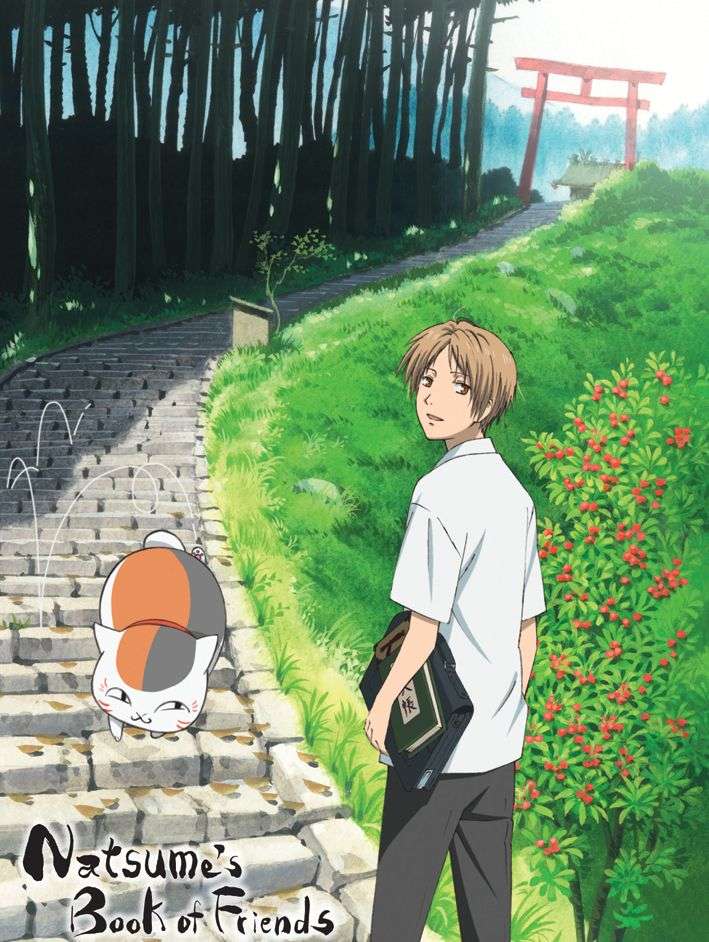
The majority of fifteen-year-old boys harbor secrets related to girls, but Takashi Natsume has a more peculiar secret involving youkai: for as long as he can recall, he has been chased by these spirits.
Soon, Natsume discovers that the Yuujinchou, or “Book of Friends,” that his deceased grandmother Reiko left him contains the names of the spirits she controlled. Having now come into Natsume’s possession, the book gives Reiko’s grandson this power as well, which is why these enraged beings are now imploring Natsume for help.
Natsume, who is constantly being hunted by hostile, merciless youkai and does not have a loving home, is searching for a place of solace — a place where he belongs. Madara, a self-proclaimed bodyguard, is his only companion. Madara commonly referred to as Nyanko-sensei, is a mysterious, pint-sized feline spirit who has his own reasons for sticking with the boy.
It is an unconventional and supernatural slice-of-life series that follows Natsume and his infamous protector Madara as they attempt to free the spirits bound by his grandmother’s contract.
Natsume encounters different youkai in every episode. It might be a youkai seeking his/her name back; other times, a youkai asking Natsume for help in some other way.
Even though the stories revolve around youkai, Natsume Yuujinchou is ultimately about humans. There is a focus on the bonds between humans and both humans and youkai. Each story is very well thought out and carries a deep message that Natsume derives from his encounters. Reasons why Natsume cannot let go of his bond with youkai, reasons why youkai fall in love with humans.
42. NHK ni Youkoso!

Tatsuhiro Satou is a 22-year-old college dropout who has been a hikikomori for almost four years now. As a result of his isolation, he has come to believe in many obscure conspiracy theories, but one, in particular, holds strong sway over him: that of the Nihon Hikikomori Kyokai (NHK), an evil and secret organization dedicated to promoting the spread of hikikomori culture.
In this psychological dramedy, Tatsuhiro struggles to escape from NHK’s wicked machinations and to escape the disease of self-induced isolation, as well as struggling to just leave his apartment and find a job. Although Tatsuhiro’s unexpected meeting with Misaki Nakahara may lead to a reversal of fortune, he will have to deal with his greatest fear-society-with this encounter.
Even though the story deals with a very serious subject matter, it is full of humorous moments. Creators of anime understand that humor is the best way to turn such a serious subject matter into an entertaining and educational anime.
However, there are also many serious and sometimes very sad moments in the anime. If you’re an emotional person, be prepared to cry or at least feel downright horrible while watching some of the episodes of this series. There is a good mixture of serious and not too serious episodes in the story. It progresses at a fair pace.
The story is well-written and well-told, and it deals with an important topic. It has just the right amount of humor and sadness.
43. Shinsekai Yori
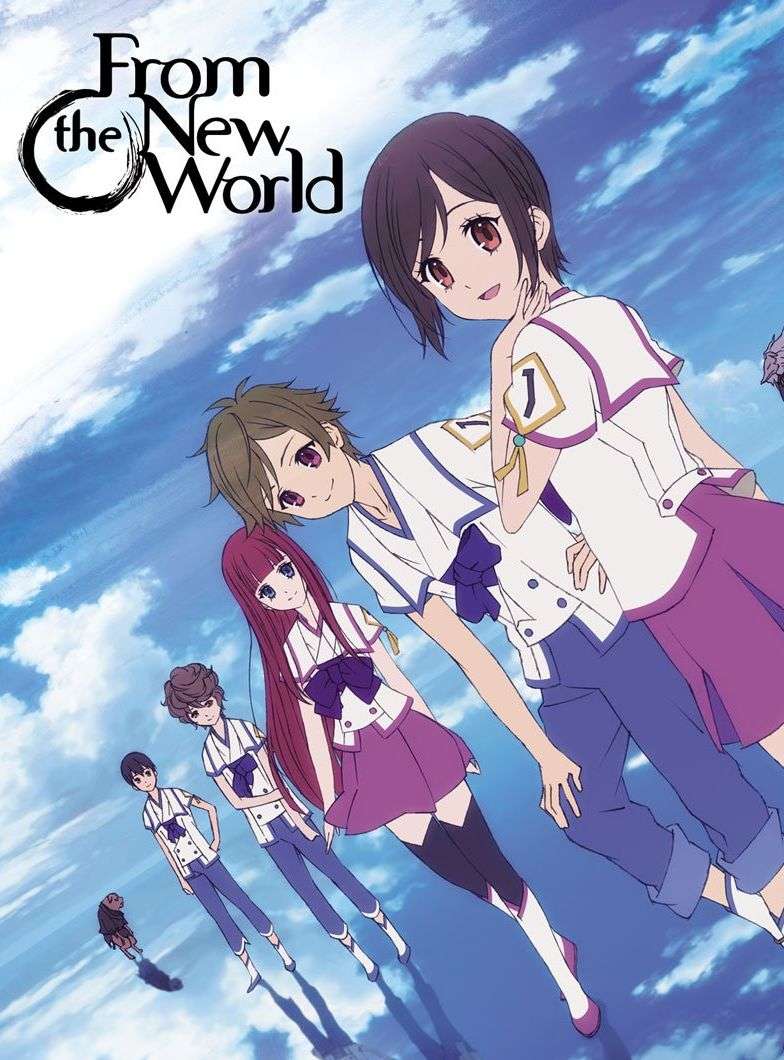
Saki Watanabe, a 12-year-old girl from Kamisu 66, has just discovered her psychic powers, and she’s relieved to be reunited with her friends Satoru Asahina, Mamoru Itou, and Maria Akizuki-at Sage Academy, a special school for psychics.
Saki begins to wonder about the fate of those unable to awaken their powers, while the children begin to get involved with secretive matters such as the Tainted Cats rumored to abduct children.
A unique coming-of-age story, Shinsekai yori recounts Saki and her friends’ journey to assume their roles as members of the utopian society. Taking on these roles might not be easy when confronted with the dark and shocking truths of society and the impending havoc brought by the new world.
From episode to episode, the plot of the show flows very smoothly, and as we approach the climax, there is a plot twist that flips the storyline upside down in a way you wouldn’t expect.
Saki, the shining star of this anime, is just one of the many characters who make it so special. Starting off as children, the main characters become adults by the end of the anime, illustrating character development properly. You would assume that twenty-five episodes would not be enough time for the characters to develop from children to adults.
Shinsekai Yori, however, pulls this off very smoothly. One character will not act one way, and then in the next episode, they are the polar opposite; everything is explained and shown very well.
44. Shirobako

In Kaminoyama High School, five best friends-Aoi, Miyamori, Ema Yasuhara, Midori Imai, Shizuka Sakaki, and Misa Toudou-discovered their common love of anime and started the animation club. The group is now pursuing careers in the industry, aiming to one day work together and produce their own mainstream show after creating their first amateur anime together and showcasing it at the culture festival.
Aoi and Ema have landed jobs with the illustrious Musashino Animation production company after two and a half years. Unfortunately, the others are having difficulty landing jobs. As Shizuka feels the weight of not being recognized as a talented voice actor, Misa has a comfortable but unfulfilling career designing 3D models for a car company, and Midori is a university student eager to pursue her dream of becoming a writer.
Through perseverance and a touch of eccentricity, the five girls will learn that success is a path with many diversions.
Shirobako is a tribute to the anime industry. The show doesn’t glorify animators or portray them as geniuses, and many of the characters admit they don’t even understand why they’re in the business. Despite the fact that it isn’t the most respected form of media, they are passionate about what they do.
In addition to being well-written and entertaining in its own right, Shirobako is also a great story. It’s a highly informative and interesting look at what the process of creating anime is all about, but it is more than that, too. And it is also courageous for being an original series and for telling a story about adult characters rather than the typical high school fare that anime is seemingly incapable of escaping from.
45. Beck
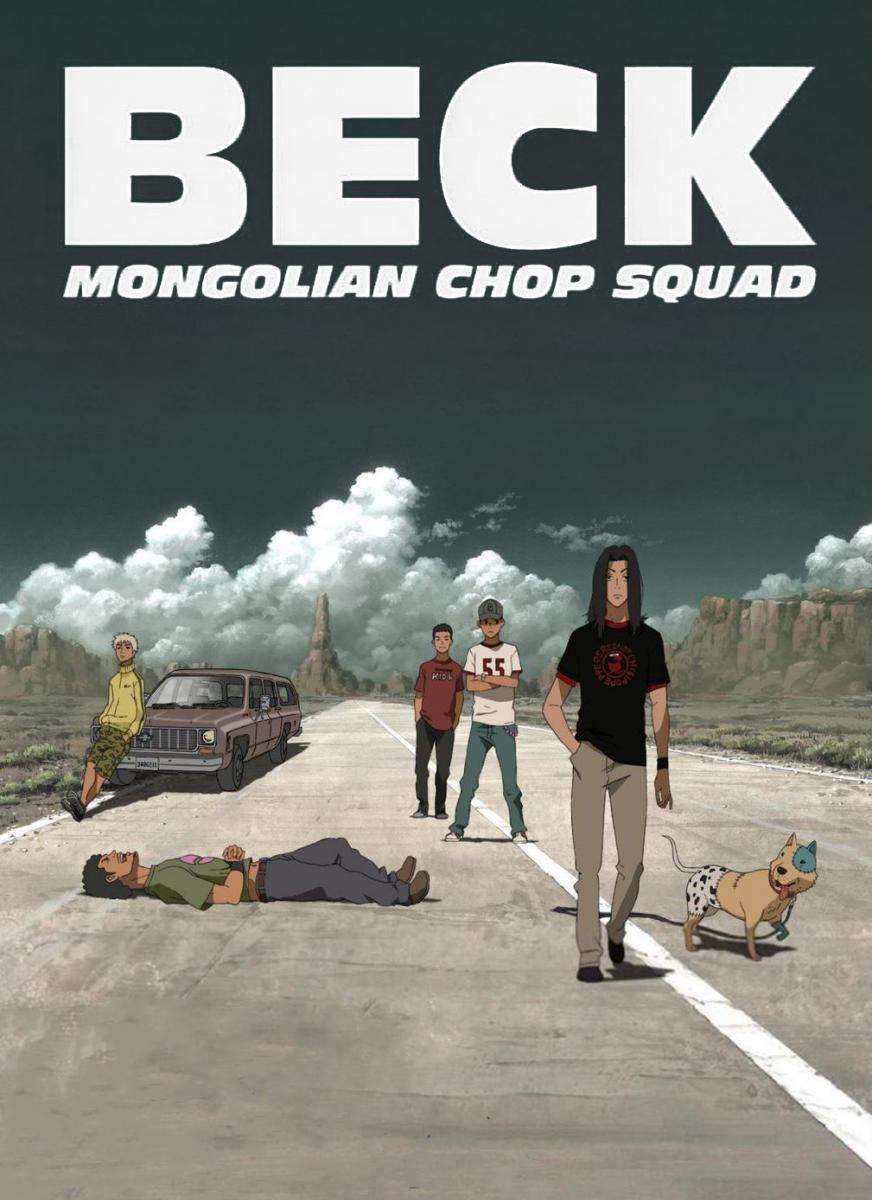
Yukio “Koyuki” Tanaka is a disillusioned fourteen-year-old without any real goals in life. All of this changes when Koyuki saves a strange-looking dog named Beck from being harassed by local kids. The dog’s owner is Ryuusuke “Ray” Minami, a 16-year-old guitarist and former member of a popular rock band.
Ray leads Koyuki to the former band’s meeting place and dazzles Koyuki with his guitar skills after they meet in a diner. Gradually becoming fascinated by western rock culture, Koyuki learns how to play the guitar while helping Ray achieve his dream of leading the ultimate rock band.
With the help of Ray’s younger sister Maho and some other members, the two boys form a band called BECK and begin their journey into the world of rock. Beck chronicles the group’s struggles and successes as they spread their fame across Japan.
Around this central plot are several subplots, usually involving a certain member of the large cast. The entire series references a number of well-known bands from the past.
Despite challenging circumstances, the characters have strong bonds. Koyuki is the central character in the series.
He teaches us everything we need to know about the supporting characters, so the story is truly experienced through his eyes and in his perspective. After watching the episodes, you know more about Koyuki than anyone.
Some romantic moments are bittersweet, some comedic scenes are hilarious, there are some intense action scenes, and there are lots of melancholy drama scenes. Ultimately, this show is incredibly unique and rewarding, a great coming-of-age story that rings so true and rocks out loud.
46. Initial D First Stage
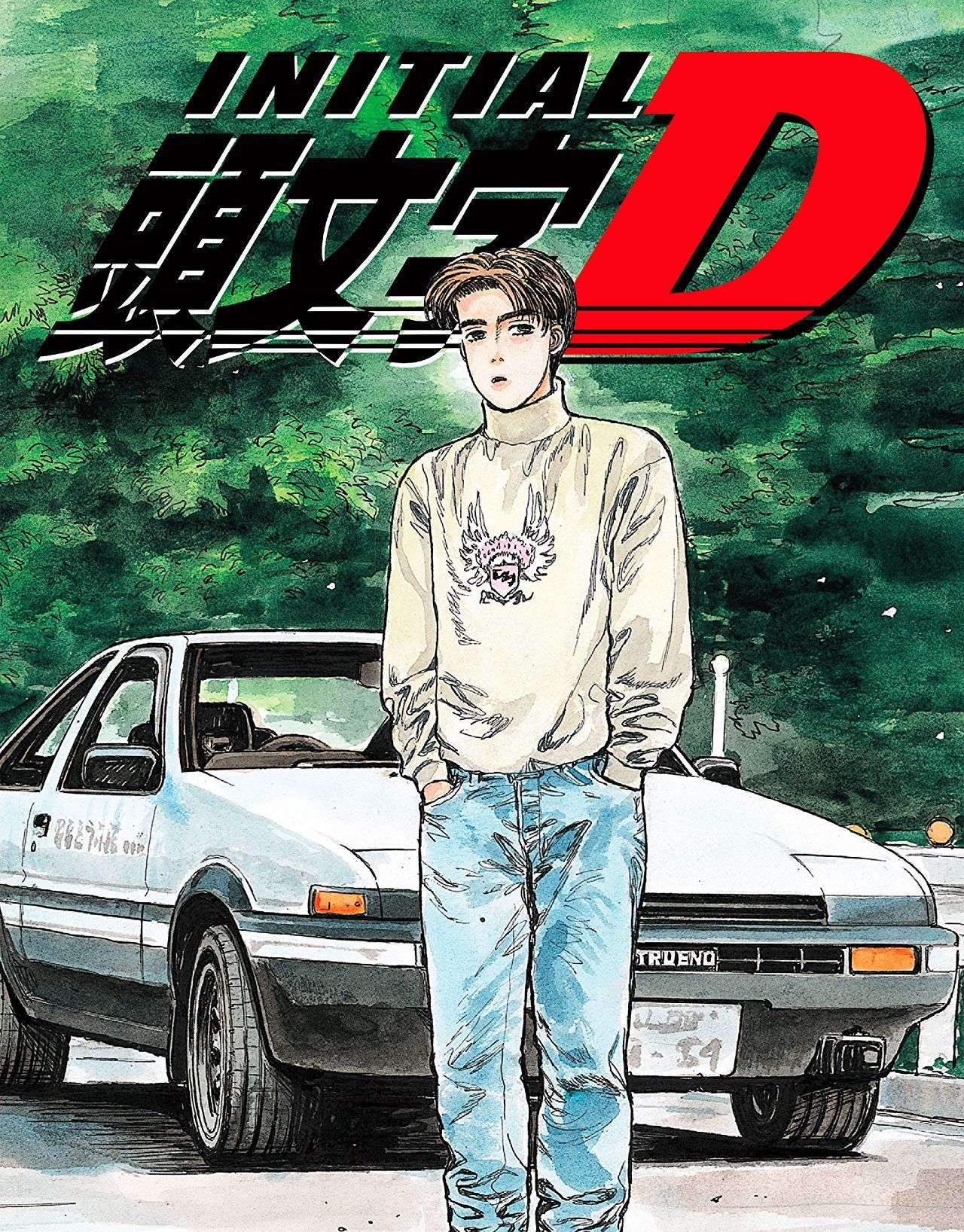
Unlike his friends, Takumi Fujiwara is not particularly interested in cars, with little to no knowledge about the world of car enthusiasts and street racers. The son of a tofu shop owner, he is tasked to deliver tofu every morning without fail, driving along the mountain of Akina. Thus, conversations regarding cars or driving, in general, would only remind Takumi of the tiring daily routine forced upon him.
One night, the Akagi Red Suns, an infamous team of street racers, visit the town of Akina to challenge the local mountain pass. Led by their two aces, Ryousuke and Keisuke Takahashi, the Red Suns plan to conquer every racing course in Kanto, establishing themselves as the fastest crew in the region.
However, much to their disbelief, one of their aces is overtaken by an old Toyota AE86 during a drive back home from Akina. After the incident, the Takahashi brothers are cautious of a mysterious driver geared with remarkable technique and experience in the local roads—the AE86 of Mount Akina.
A strong point to this series is its characters. Takumi is not an archetype of a driving series’ main character; in fact, his apathetic attitude makes him stand out. He is not this overly energetic, loud protagonist; he is rather reserved but sharp. The rest of the characters blend in perfectly, and their interactions are real.
Despite the fact that they throw around a little bit of racing lingo, you are never more behind than the main character, and you are given a chance to become intrigued by street racing while Takumi does so.
With his attitude and experience, he hooks and reels you into what would otherwise be a complicated and technical world of street racing.
47. Planetes

Humanity will no longer consider space travel a dream but an everyday reality in 2075. Through advances in science and technology, the moon has been colonized, outer space has been commercialized, and large space corporations have been formed.
Dedicated to removing dangerous space junk between the orbits of Earth and the Moon, Ai Tanabe joins Technora Corporation’s Debris Section.
Ai soon discovers that her job is underappreciated. As Technora’s laughingstock, the Debris Section is understaffed, underfunded, and forced to use a dilapidated spaceship nicknamed the “Toy Box” for debris retrieval.
As she perseveres, Ai becomes familiar with the strange personalities that make up the staff of the Debris Section, such as the bumbling but kind-hearted chief clerk Philippe Myers, the mysterious and tight-lipped temp worker Edelgard Rivera; and the hotheaded and passionate Hachirouta Hoshino.
The show Planetes is an unconventional sci-fi series that portrays the vastness of space as a backdrop for the lives of ordinary people born on Earth with hopes and dreams that lie in the stars.
Planetes’ greatest strength is its characters. Hachirouta and Ai are excellent leading characters. Each member of the crew is just as interesting as them. Like most shows, everyone has their own problems and ambitions. Planetes does an excellent job of describing each character.
The characters on the space debris crew are all featured in at least one episode. Almost everyone who gets some screen time gets fleshed out. Honestly, it’s pretty amazing. Every character feels like an actual person.
48. Tokyo Revengers
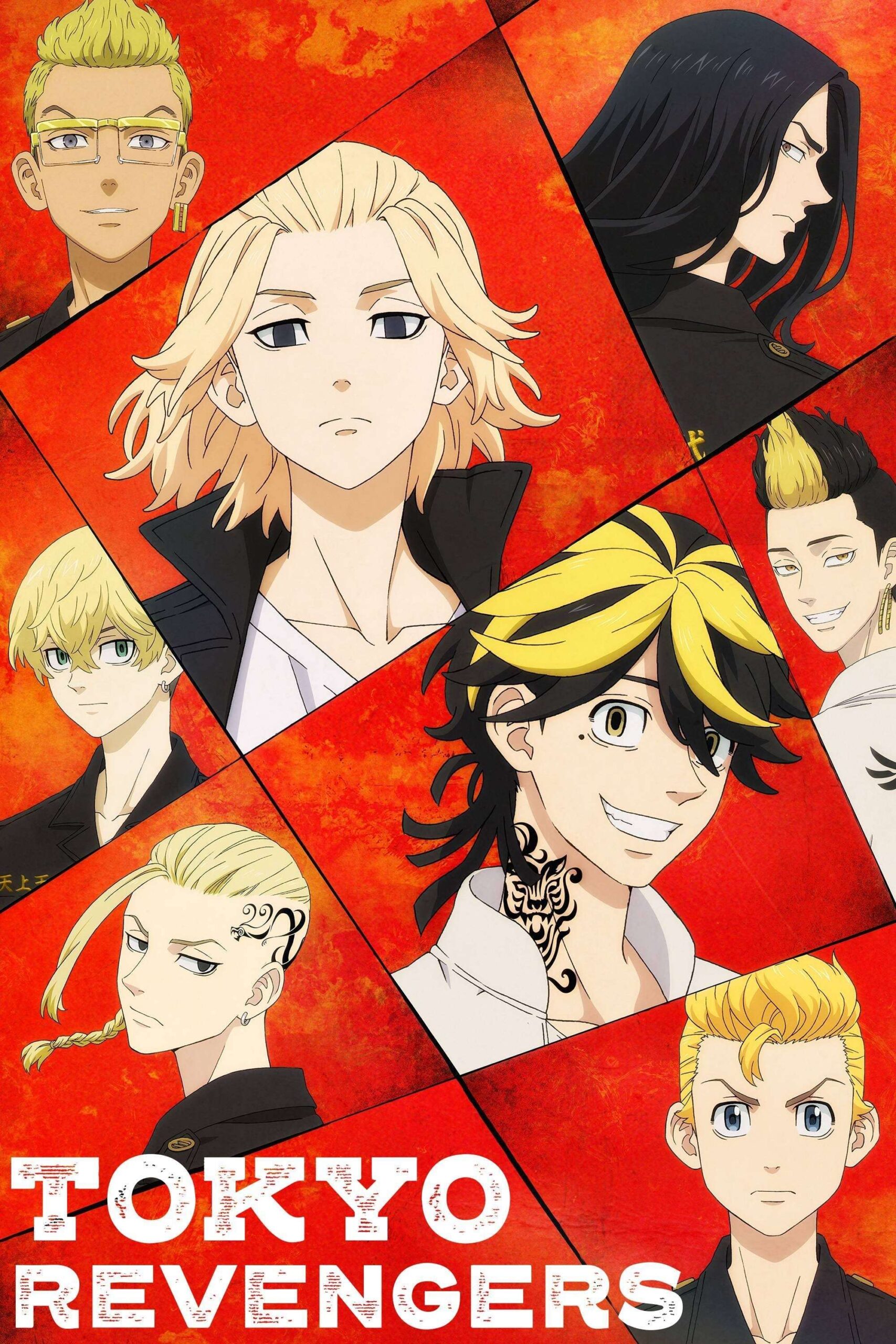
It was the best year of Takemichi Hanagaki’s life during his second year of middle school. He had respect, a group of friends he could count on, and even a girlfriend. However, that was twelve years ago. A washed-up nonentity, he’s today a nobody who’s sneered at by children and always has to apologize to his younger boss.
It only adds insult to injury to learn that the Tokyo Manji Gang brutally murdered his only girlfriend along with her brother. Before a train ends Takemichi’s pitiful life for good, he remembers that same day twelve years ago when he was still dating Hinata Tachibana.
Takemichi meets Hinata’s younger brother after having to relive the day that started his downward spiral. Suddenly, he confesses to his apparent death before flashing back in time. Before inexplicably returning to the future, Takemichi urges him to protect his sister. He is alive, miraculously. Even stranger, the future has changed.
Takemichi seems to be able to alter the flow of time. Given the chance to prevent his ex-girlfriend’s tragic death at the hands of the Tokyo Manji Gang, Takemichi decides to fly through time to change the course of the future.
There is an intense atmosphere created by the characters and their individual stories, which makes 20 minutes feel like just a few seconds. It is a show with great character development, and it never disappoints. Everything is so well connected. It gets straight to the point in each episode, with each episode ending with you wanting to learn more.
Each character is well-written, lovable, and for the most part fairly realistic, without supernatural elements or powers, just good, ordinary people who we come to love.
49. Kono Sekai no Katasumi ni
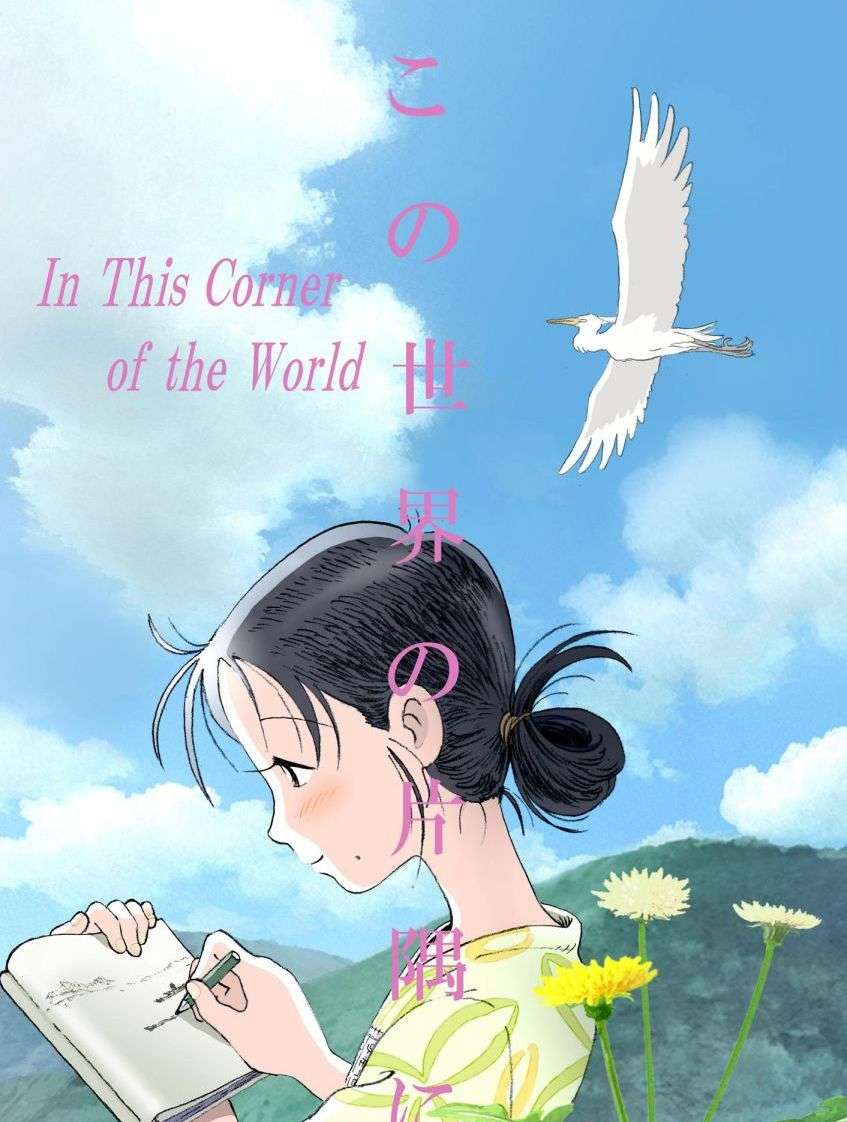
Suzu Urano is a kind-hearted, pure girl who loves to draw. Living on the outskirts of Hiroshima with her family, she is more than happy to assist her grandmother with her nori business.
Suzu leaves her beloved home when she becomes of age to marry Shuusaku Houjou, a man she barely knows. As she adjusts to her new husband’s household, the homesick bride struggles to adapt to the unfamiliar environment since the war effort extends far beyond the point of no return. How will Suzu support herself and the people she comes to love along the way when the war reaches her own backyard and peace gives way to brutality?
It shows the perseverance and fortitude of ordinary Japanese during one of the darkest periods in modern times in Kono Sekai no Katasumi ni, a colorful yet haunting portrayal of everyday life before and after World War II.
It depicts the life of an ordinary family at that time in great detail. It begins by showing her traditional marriage with a new husband, as she shares life with her in-laws and communicates with neighbors. Though the story is set during wartime and hardship gradually creeps in, there are happy, sweet, and tender moments.
Through sublime storytelling, the director has created a magnificent performance from the beginning to the end of the film. It moves at a fairly slow pace, but it never gets boring. Instead, we are immersed slowly into the everyday lives of our cast members. The story does an excellent job of building tension towards a specific end date, leaving you on the edge of your seat waiting to see how history will affect the lives of characters we care about.
50. 86
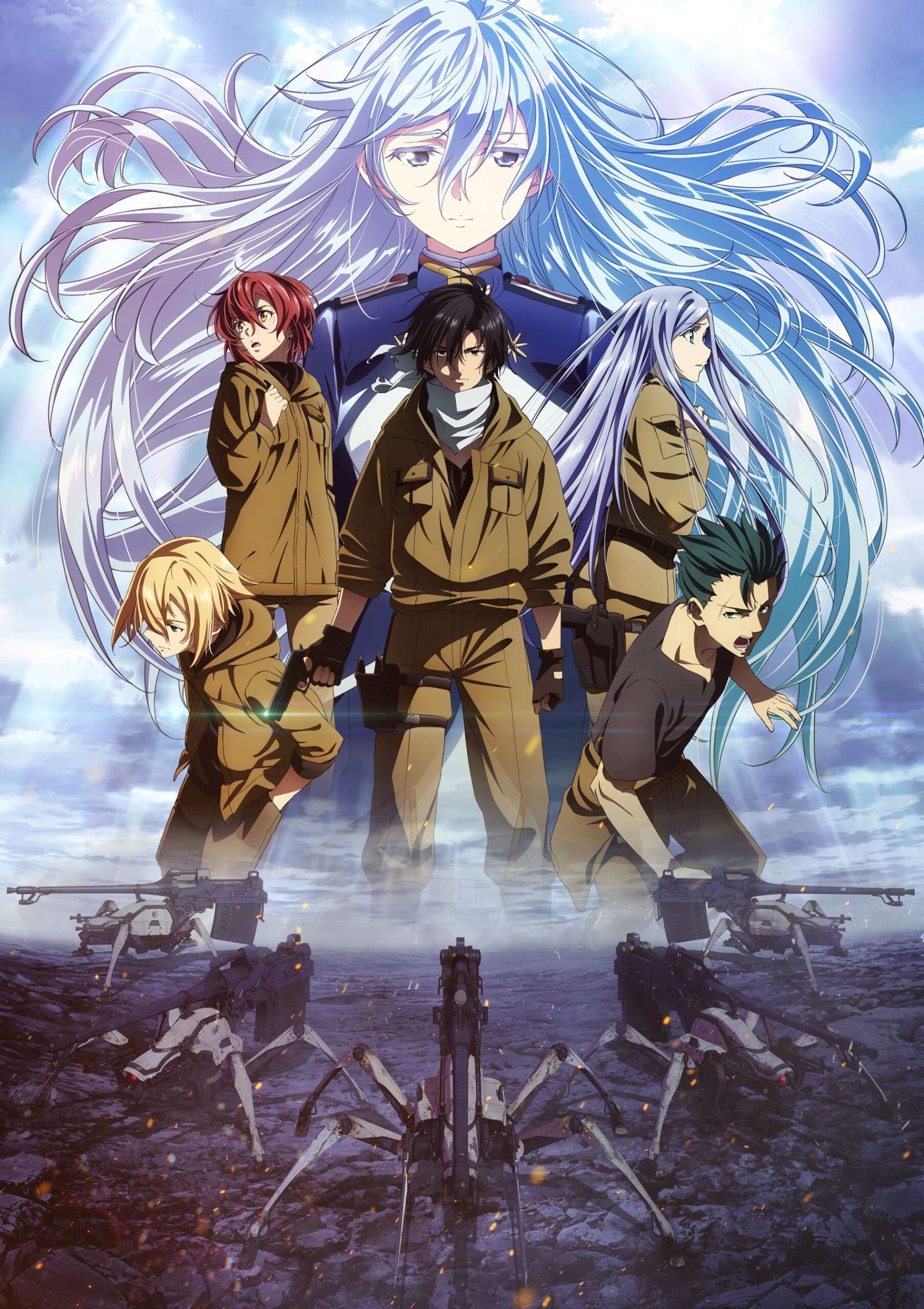
The Republic of San Magnolia claims that there are no casualties in their ongoing war against the Giadian Empire, but that is propaganda. In the Republic’s eighty-five sectors, the silver-haired Alba live peacefully behind protective walls; those with different appearances are housed in a secret eighty-sixth faction. Under the command of the Republican “Handlers,” they are known within the military as the Eighty-six and are forced to fight against the Empire’s autonomous Legion.
In the Spearhead squadron, Vladilena Milizé has replaced the previous Handler. She continues to fight against inhumane discrimination despite being shunned by her peers for her support of Eighty-Six. Shinei Nouzen is the Spearhead squadron’s captain.
Being the only survivor of every squadron he has been a part of, he insists on carrying the names and wishes of his fallen comrades. Will the fates of these young souls from two different worlds collide, sparking the light that lights their path to salvation, or will they burn themselves in the flames of despair?
Throughout the war, the characters learn what it means to live, to survive, and to fight. However, the story of 86 goes much deeper than just a frontline war. Their society has unimaginable secrets hidden behind closed doors.
It depicts the brutality of war, racism, and oppression in such a way that you cannot help but become enthralled with the characters and story. 86 makes us understand what life really is like for its characters, as it captures the feeling and reality of war. When war breaks out, you can see how it can change a world and its people.
With its historical background storytelling, 86 incorporates elements of war drama by showing and telling. From the very beginning, we learn about the state of the world and how characters are shaped by what they are.
51. Plastic Memories
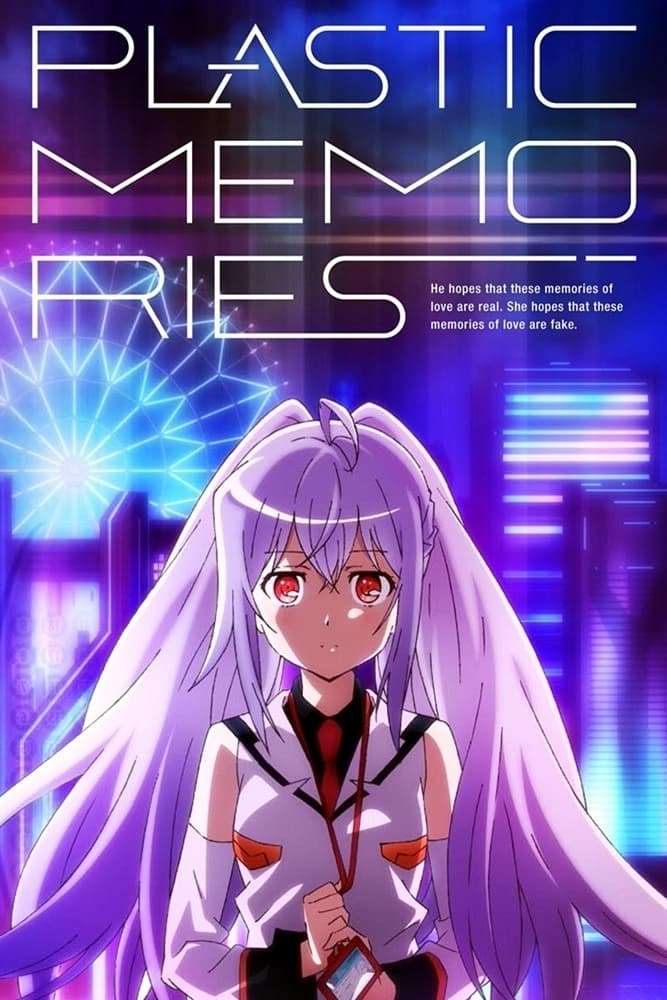
Despite failing his college entrance exams, Tsukasa Mizugaki, age 18, manages to land a job at the Sion Artificial Intelligence Corporation after pulling some strings. The SAI Corp creates Giftias-highly advanced androids that are virtually indistinguishable from humans.
Unlike humans, however, Giftias have a maximum lifespan of around nine years and four months or 81,920 hours. Tsukasa’s station, Terminal Service One, is responsible for collecting Giftias after they reach their expiration date. This prevents them from losing their memories and becoming hostile.
Tsukasa is partnered with a beautiful Giftia named Isla shortly after joining Terminal Service One. In spite of her petite figure and placid nature, she is considered the best in Giftia retrievals. However, time is fleeting, and Tsukasa must confront his feelings for Isla before her time runs out. Nothing lasts forever, no matter how much someone wants it.
The story is not entirely original; it takes a lot from other sources, but what it does that is new is pretty engaging. The idea of a limited lifespan for androids is interesting. The story is very good and has a good focus; it shows that even if you only have little time to create good memories for someone, it is better than if you don’t create any at all.
The characters in Plastic Memories are all great in one way or another; the ones who need development get it, and the others are there to serve as foils for our main characters. This anime is fun to watch, it knows how to do everything it wants to do, and it is an overall amazing anime. It shows the ups and downs of a relationship and really delves into some deep things.
52. Chihayafuru

Chihaya Ayase is a tomboyish girl who grew up under the shadow of her elder sister. She has no dreams of her own, so she is content with her lot in life until she meets Arata Wataya. It was a quiet transfer student in her elementary school who introduced her to competitive karuta, a physically and mentally demanding card game inspired by the classic Japanese anthology Hundred Poets.
Inspired by Arata’s passion for the game, Chihaya quickly falls in love with karuta. Together with the prodigy Arata and her haughty but hard-working friend Taichi Mashima, she joins the local Shiranami Society. The trio spent their childhood days playing together until circumstances caused them to split up.
Now in high school, Chihaya has grown into a karuta freak. She aims to establish the Municipal Mizusawa High Competitive Karuta Club, setting her sights on the national championship at Omi Jingu. Reunited with the now indifferent Taichi, Chihaya’s dream of establishing a karuta team is only one step away from becoming true: she must bring together members with a passion for the game that matches her own.
This show offers more than just card games. According to Chihaya, the protagonist of the series, karuta is also about creating a dream for herself and the bond she formed with Arata and Taichi when she was 12.
There is romance in the story, but it is only an element of development. It is more about friendship and the game itself than any romantic moments in the story.
Chihayafuru is characterized by character-driven plots, which in their own way can be heart-wrenching entertainment. Each of the characters has a characteristic to love, from their design to their personalities.
53. Skip Beat!

Kyouko Mogami, a bright, diligent, and yet naive 16-year-old, works hard to support the career and dreams of her childhood friend, crush, and rising pop icon, Shoutarou Fuwa. Despite endlessly working at burger joints and tea ceremonies, Kyouko remains unaware that day in and day out, all her tireless efforts have been taken for granted until, one day, she discovers that her beloved Shou sees her as nothing but a free servant.
After being shocked, heartbroken, and enraged, she vows revenge on the rookie star by entering the ruthless world of entertainment herself. As Kyouko enters this new life, she will face new challenges and meet people who will push her out of her comfort zone.
Skip Beat shows the growth of a young woman who slowly unlearns how to work herself to the bone for other people and instead takes her own future into her own hands.
Instead of crying over numerous tubs of ice cream while re-watching their favorite soap operas, Kyouko turns this pain and suffering into something beautiful. In her journey into the mysterious and somewhat scary world of show business, she uses her newfound hatred for Shou as fuel.
Like Kyoko, all of the characters in this anime have a reason to do what they are doing. They all have a single purpose they are trying to achieve. Because not all of the characters are there for the same reason, we as viewers are able to see some great ideology clashes and disputes that break out among this wide variety of characters. This anime reveals all of the ugly that actually goes on behind the makeup and perfectly lit photos while remaining non-cliche and upbeat.
54. Gosick
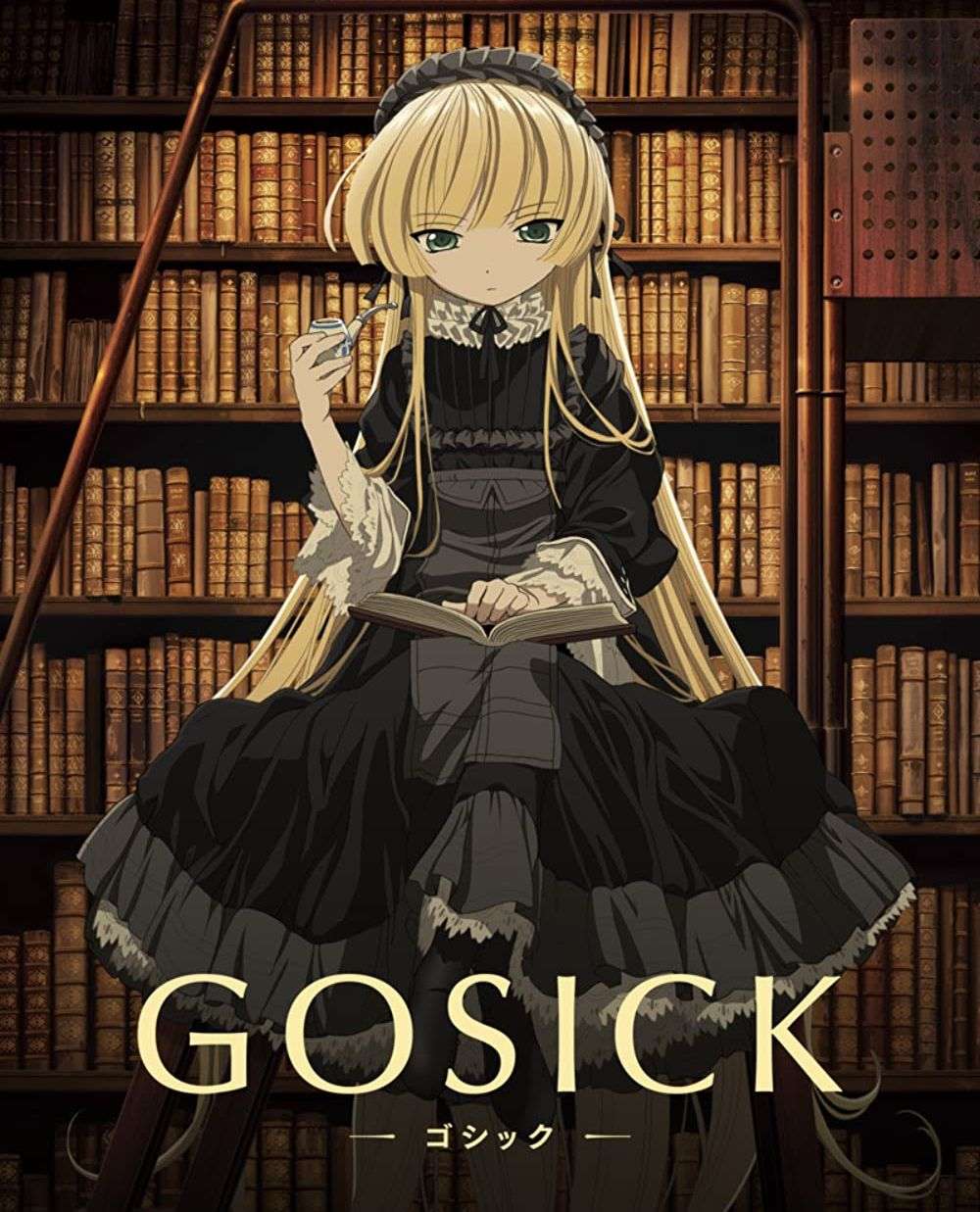
Kazuya Kujou studies at Saint Marguerite Academy, a luxurious boarding school in Sauville, a country in southern Europe. Japan-born, his jet-black hair, and dark brown eyes have earned him the name “Black Reaper,” after a popular urban legend about the traveler who brings death to the spring season.
In search of ghost stories, Kujou visits the school’s lavish library on a typical day. However, his focus soon shifts when he notices a golden strand of hair on the stairs. In the garden, he finds a doll-like girl known as Victorique de Blois with a complex and imaginative foresight that allows her to predict their futures, now intertwined.
Victorique and Kujou, bound by fate and their unique skills, have no choice but to rely on each other as more mysteries, unfold-including the appearance of a ghost ship and an alchemist with transmutation powers.
A number of the smaller mysteries are used as plot devices to allow Victorique and Kujou to interact and bond. They complete each other very nicely and make a great team.
Each supporting character has a clear-cut personality. Even one-shot characters have histories explained briefly without distracting from the plot. This is one of the best aspects of the show. The minor characters fulfill their roles well.
It has enough plot to make it interesting and engaging while not going overboard with the dark/twisted themes. Gosick is an overall enjoyable anime that tells the story of two very different people as they tackle fables, legends, stories, and their own shortcomings.
55. Hachimitsu to Clover

An arts college sophomore named Yuuta Takemoto lives in a cheap apartment with two seniors – the eccentric Shinobu Morita, who keeps failing to graduate because of his absenteeism, and Takumi Mayama, who acts as a proper senior to Takemoto, looking out for him.
Takemoto never gave much thought to his future until he encountered the endearing Hagumi Hanamoto and fell in love at first sight. As a gifted artist, Hagumi enrolls at Takemoto’s university and soon befriends popular pottery student Ayumi Yamada. The three flatmates are already well acquainted with Ayumi, and she secretly harbors deep feelings for one of them.
A heartwarming tale of youth, love, soul-searching, and self-discovery, Hachimitsu to Clover reflects the intricate relationships between five dear friends.
For many anime fans, the medium can become more than just animated entertainment. Often, we connect emotionally with a character or characters in a show.
Sometimes, the story will seem less like a fanciful escape and more like a reflection upon society or our individual lives. These are the kind of shows that stick with us. They’ll make us laugh, they’ll make us cry, and sometimes they’ll make us realize something new about ourselves. An anime like this usually does that.
The characters definitely make the show. Hachimitsu to Clover, like many other slice-of-life series, falls back on the characters to help carry the series, and all five of the main characters do so phenomenally. Throughout the series, the perspective changes so that we see, hear, think, and occasionally feel what any given character is going through at that time.
